One Day in Antwerp “following Ruben’s footsteps” and nibbling its Flemish Food!
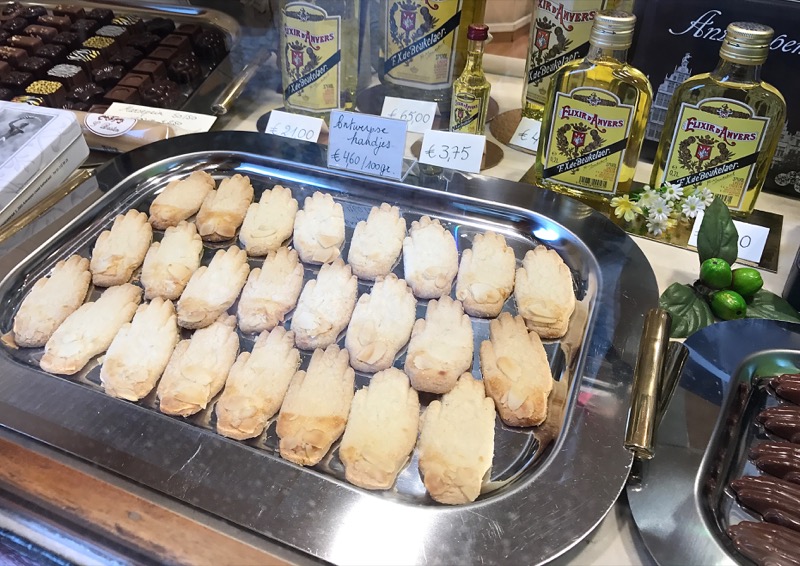
We stopped in Antwerp for Ruben. The first leg of our Europe Tour 2016 was to immerse ourselves in Flemish Art: our favourite. We stayed in The Hague, alongside Vermeer’s “The Girl with the Pearl Earring” and spent our first full day in Delft, his birthplace. Today, I had booked a city guide for three hours to take us through the life of Ruben, the history of the city, some highlights, and point out the Flemish Food specialties enroute. A tall order, but she did a fabulous tour.
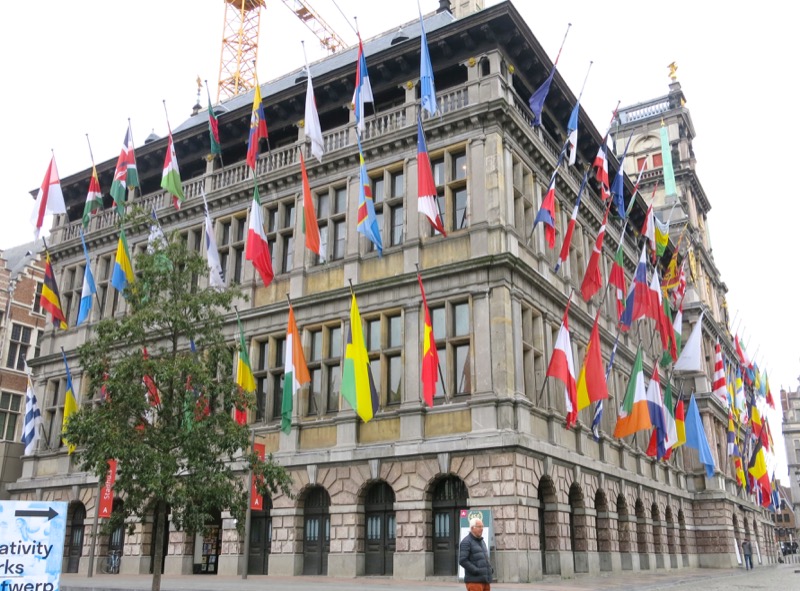
We met her in front of the Antwerp Tourist Office in the main square in front of this grand city hall. It was so reminiscent of the Grand Palace in Brussels! Stunning city.
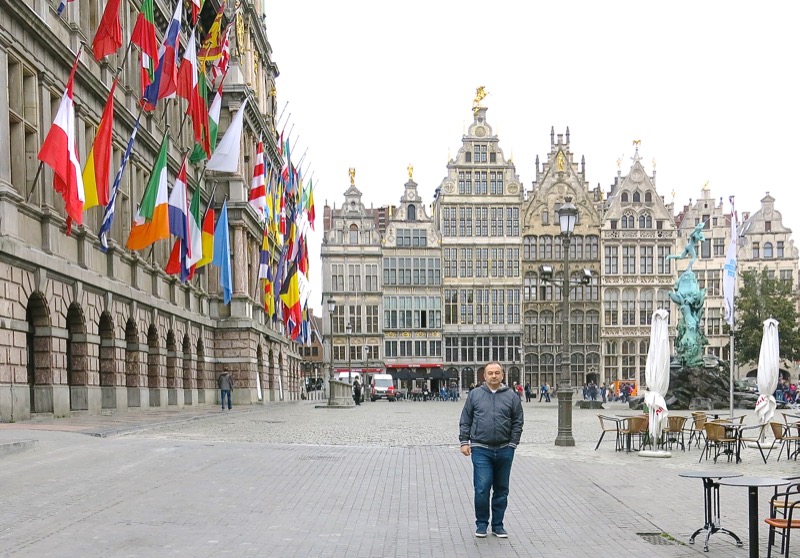
Architecture similar to that of Delft, yet different. We were meeting on the other side of the famous hand throwing statue, above.
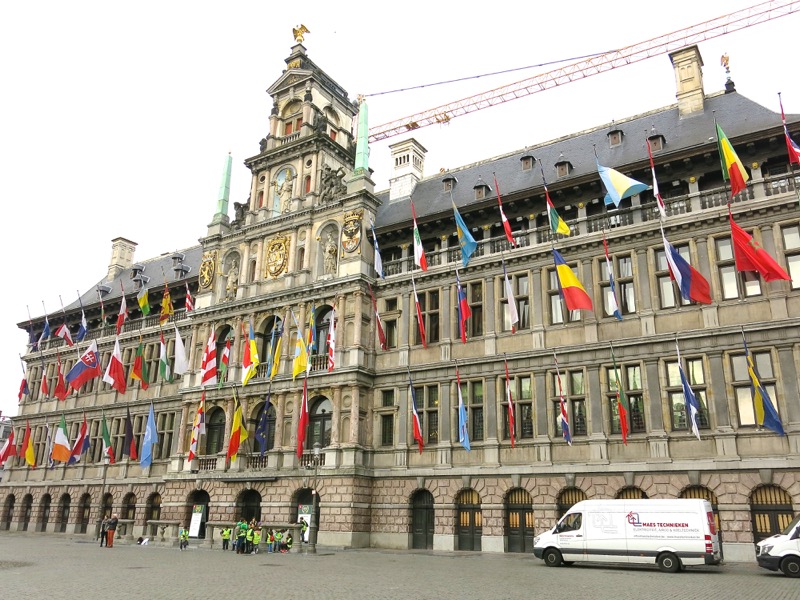
I called the local tourist office in Antwerp, Ghent and Bruges and booked guides in all three places for us for 3 hours each day. The guides are 35 EU per hour plus a 5 EU tax. I found this very affordable for a personal tour considering what one pays for three hour group tours, or even individual tours in other locations. I recall trying to get a guide in St. John’s Newfoundland and the only one we could find would be 350 CA for the same three hour period. Now, why is that? Of course, these are all walking tours, yet, they are free in Bruges and other places, sponsored by the municipality. However, as they are at specific times and with itinerary’s that may not meet one’s needs, it is nice to know there are other affordable options. We found the entire Flemish area very tourist friendly and was tickled pink that we could book a guide so affordably.
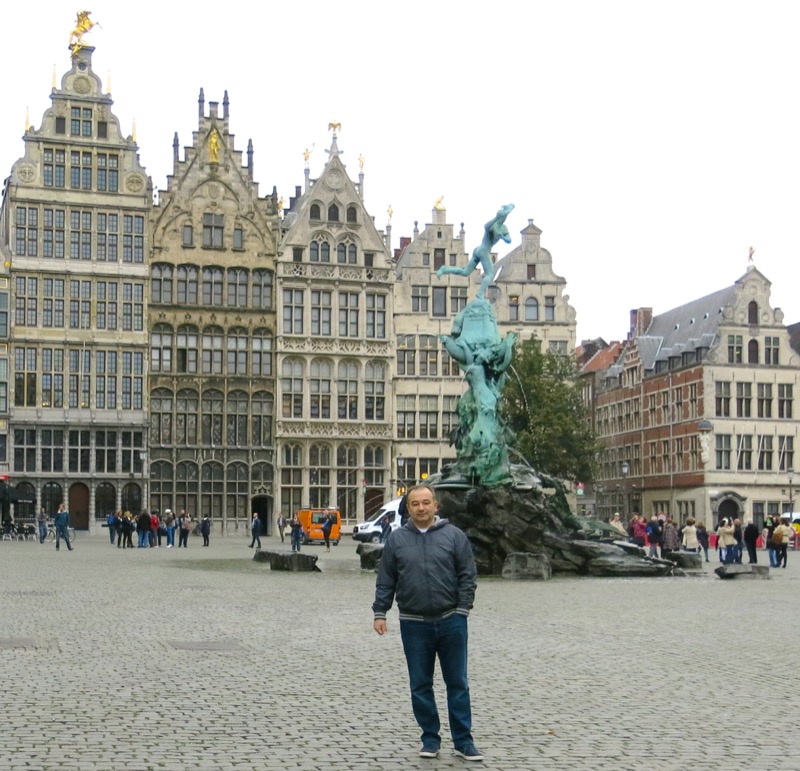
We drove the 90 minutes in from The Hague, stopped at Kleinblatt’s Bakery for the local neighbourhood early morning Jewish Kosher Bakery experience. No, we are not Jewish, but I love food culture of all sorts and Antwerp has a very important Jewish population. The neighbourhood was on our way in, and the bakery was on my curious list. A great start to our day! Highly recommend a stop there, though not Flemish Food, per se, certainly key to the Antwerp food scene.
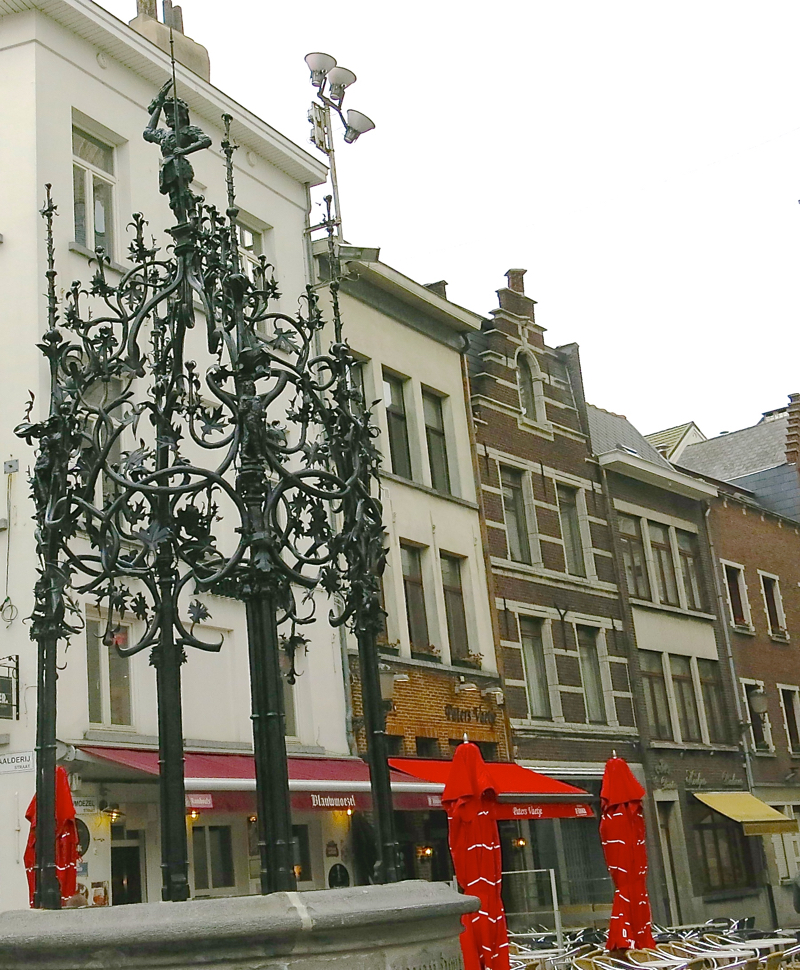
We started our tour through the beautiful city and as we walked, learned some history, more about Flemish Food, the local culture and had some unique and unexpected experiences. Like this one.
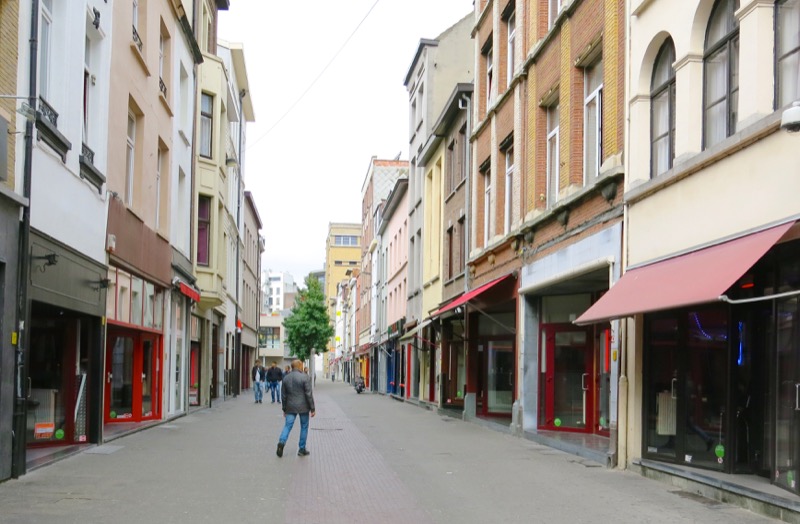
Above, is the red light district. Right in the middle of a neighbourhood route from home to school or from home to work. Children walk down these very streets to get to school, business people use the route to find their way to work. This is not an “out of the way” place that the “curious” or whatever else, have to find their way to. It is smack dab in the middle of the old town. Store front windows are huge, as in Amsterdam, and, as always, I was shocked and curious. “Valerie!” was Vanja’s call, as I lingered and really wanted to “save” some of the gals that looked like some of my grown up students…. yet, others looked like hags right out of a horror movie. “Different men like different women.” were Ariane’s wise words. Ah!
Flemish Food: Antwerp hands or Antwerpse Handjes
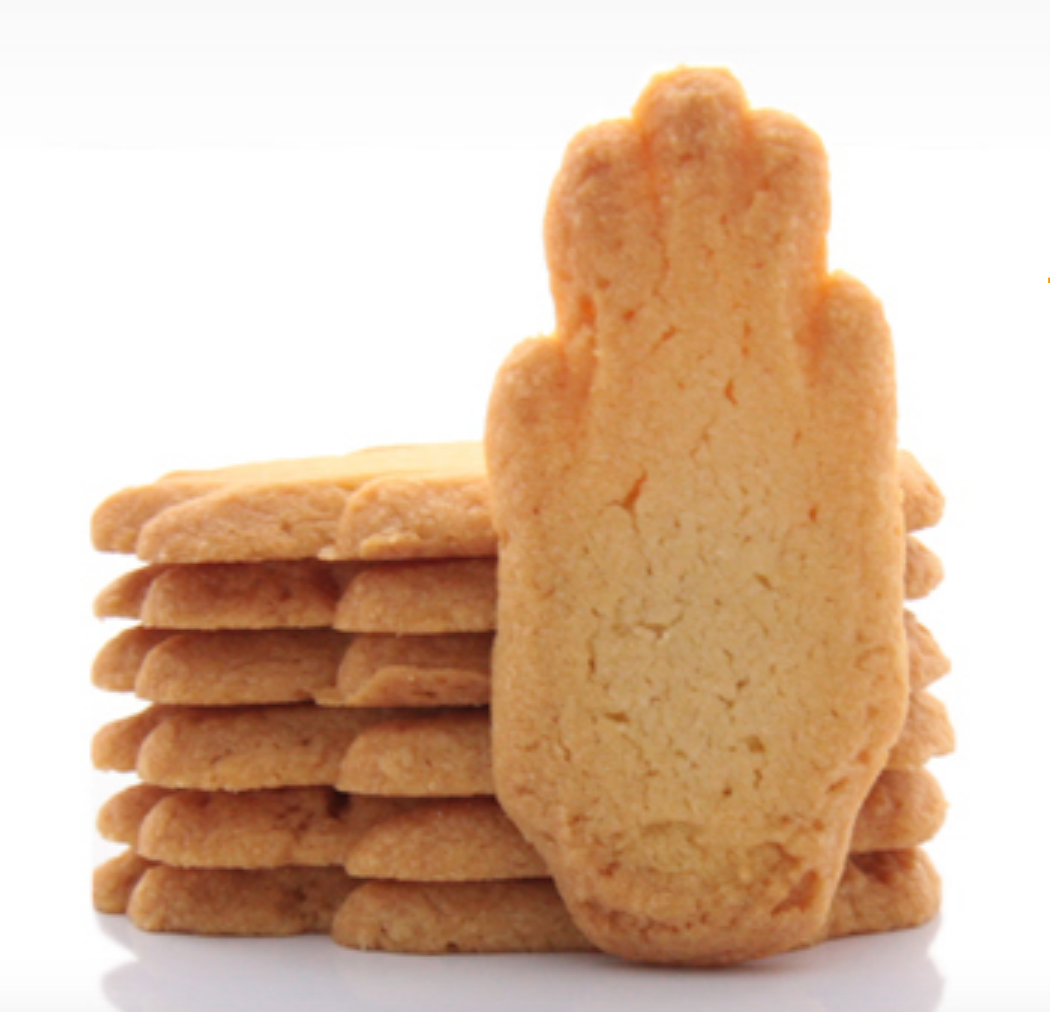
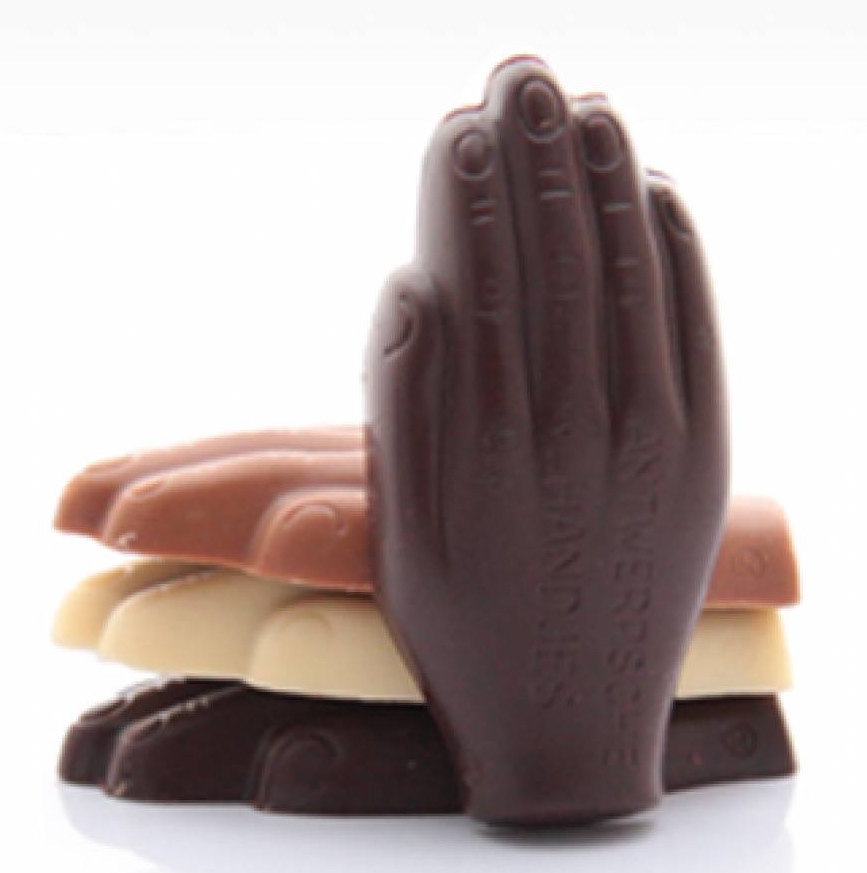
Cookies! Cookies! I see the Antwerpse Handjes! Stop! Stop! Antwerp hands are the most famous cookies Antwerp. The shape is significant as it represents the hand of the giant slayed by Roman soldier, Silvius Brabo. While the Belgium acknowledges three official languages (Dutch, French and German) the official language of the Antwerp province is Dutch. And, in Dutch, the name Antwerpen, is is hand werpen, or hand and wearpan (to throw) and believed to have derived from the same lore. The name Antwerp is Anvers in French and Antwerpen in Dutch; however Dutch is the language in all the Flemish areas of Belgium.
It is said that as people came to cross over or under the bridge over the river Scheldt to arrive into Antwerp, the giant made them pay to pass. If one could not afford to pay, he would cut off their hand and throw it into the river. Brabo became an Antwerp hero by killing the giant, cutting off his hand, and throwing it into the river Scheldt. Not only is the hand became the symbol of the city, it is how the name was derived and the story behind the creation of the Antwerpse Handjes.
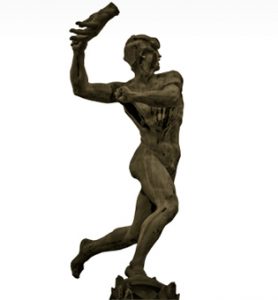 In 1934, Jos Hacker initiated a contest for an Antwerp could have a culinary specialty. The Royal Society of Master Confectioners of Antwerp organized a contest for the confection, and interestingly, he won with the recipe and shape of his Antwerpse Handjes.
In 1934, Jos Hacker initiated a contest for an Antwerp could have a culinary specialty. The Royal Society of Master Confectioners of Antwerp organized a contest for the confection, and interestingly, he won with the recipe and shape of his Antwerpse Handjes.
In 1956, regulations for the cookie were created to include the shape, ingredients and packaging: all protected by patent. Not only that, only members of the Syndicate Union of Bakery, Confectionery and IJsbedrijf had permission to manufacture the cookie for sale. Only butter, sugar, eggs, flour and flaked almonds were approved and these rules are still in effect today.
“The ingredients create a crumbly [texture]. This is rolled out. The hands are extended with metal molds, and then for 8 to 10 minutes, baked in an oven at about 180 ° C. The fragile shortbread is then wrapped in specially approved tin boxes or bags or sold loose by its members.” All decisions, approvals and designs are overseen by the professional association.
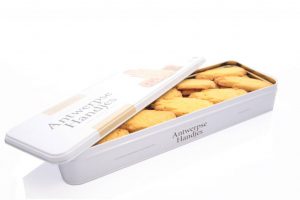
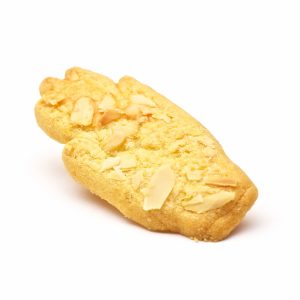
Carefully regulated specialties are recognized in almost every European city and a fundamental part of their culinary culture, tradition and food history. This one is a little different as it was created via a contest. Still, it has a great story behind it and provides a lovely gift for tourists and visitors. There is other Flemish food somewhat similar, like the Ghent nose.
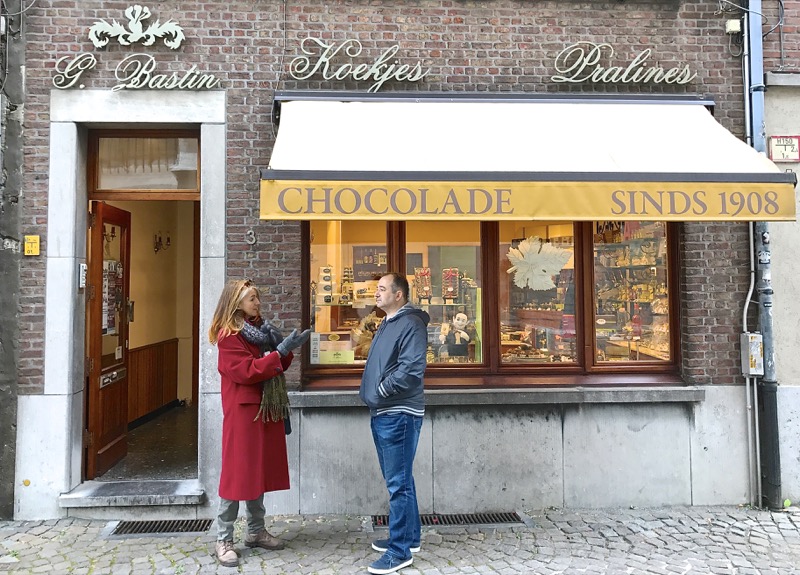
But, there are no shortage of those! When in Bologna a few years ago, I took a pasta making class and had the opportunity to learn and make the “Official Bolognese Sauce Recipe” approved and recognized by the city. We just had it for supper last night. I make it all of the time. It is superb, but more importantly, it is a great tourism and educational tool that places value on traditional and heritage food recipes specific to a region or a city. Red Deer is my home town, and several years ago now, they had a contest for someone to create a “Red Deer Cookie”. Unfortunately, it is not so well known, though I try. It is not sold in the city or celebrated there anywhere because there is no story connecting the cookie to the stories or culture of Red Deer. I still make “The Red Deer Cookie” every year at Christmas to pay homage to my hometown on my Christmas Cookie Platter. Edmonton needs a cookie. The Edmonton Food Council might consider designating foods specific to Edmonton with official standards. In Chinatown, the Edmonton Onion Cake. In Little Italy, the Edmonton Italian Sandwich. I believe we already have an Alberta Prairie Dinner Bun, and so much more. Let’s get on this!
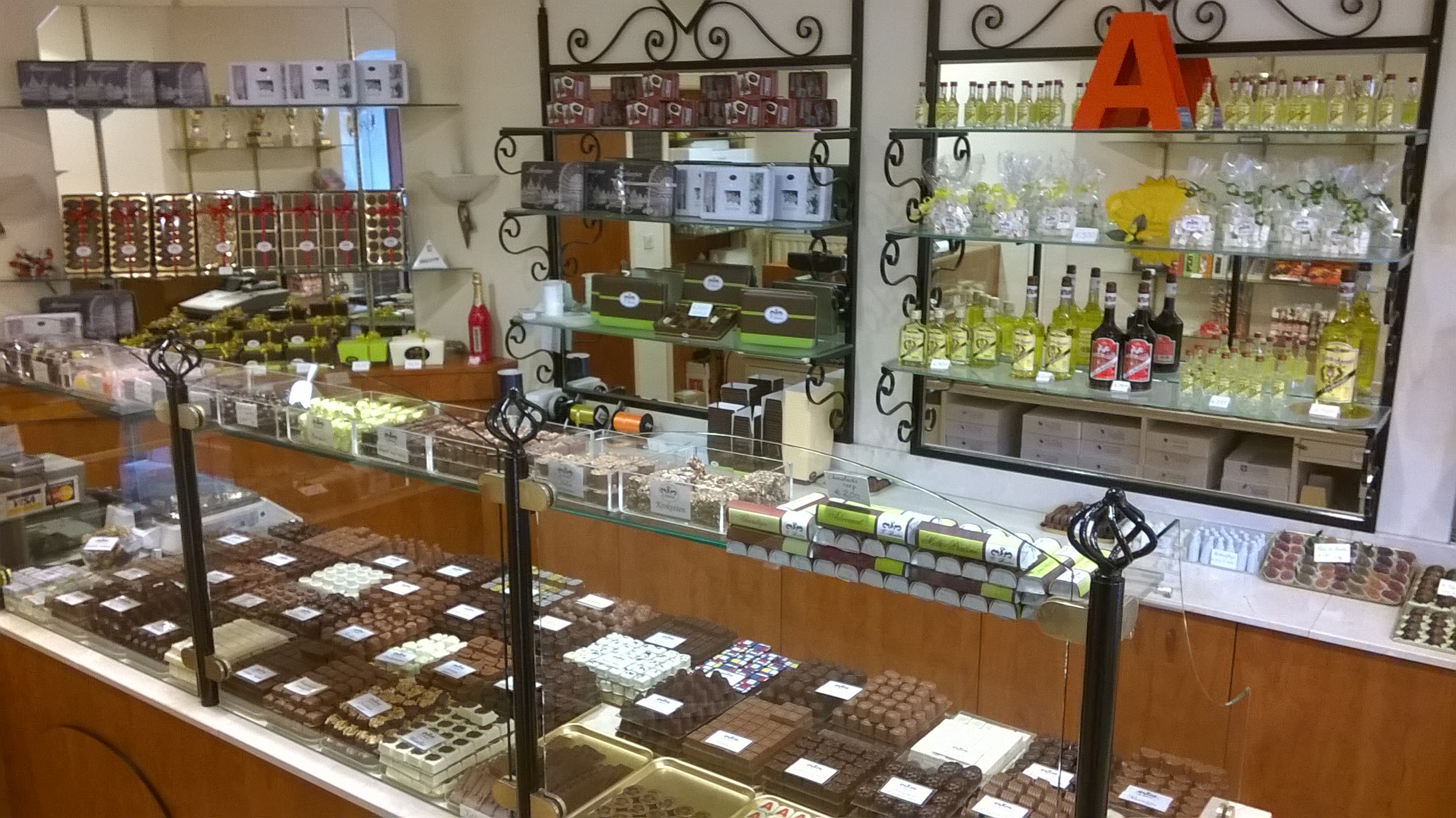
Yes. Off topic. I was licking the window in front of G. Bastin a very reputable small Antwerp chocolatier. In we went! …
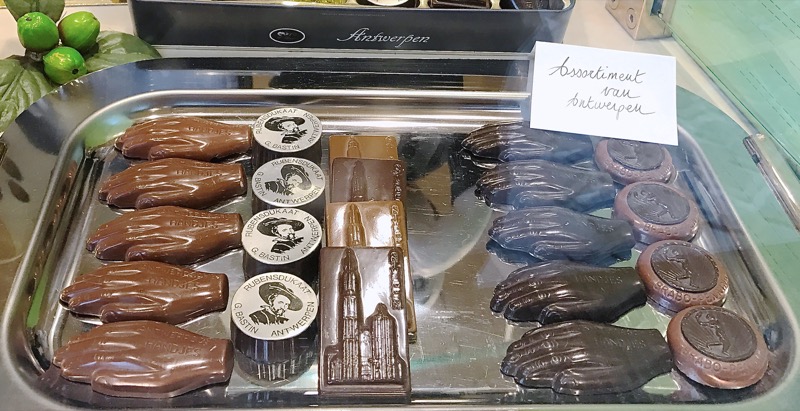
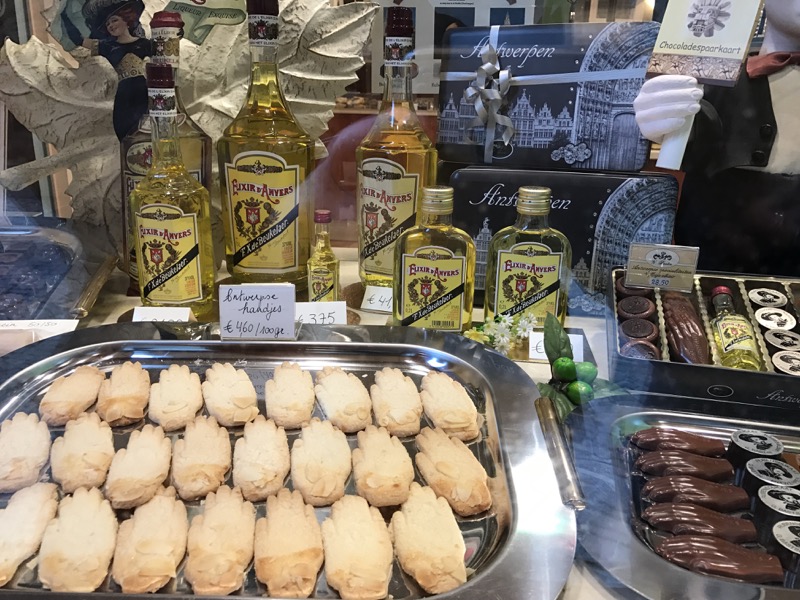
….specifically for the hands. Read about them before coming. They were on my list. Here we are. Let’s buy some! Oh, and look! Chocolate ones, too. Filled with marzipan, my ultimate treat! Some of those, too! And, what? A Ruben’s chocolate. One of those, too. Love the Mozart specialty praline that is the official one I had in Vienna a few years back. So delicious I can still remember where I stood and what I was looking at when I bit into it.
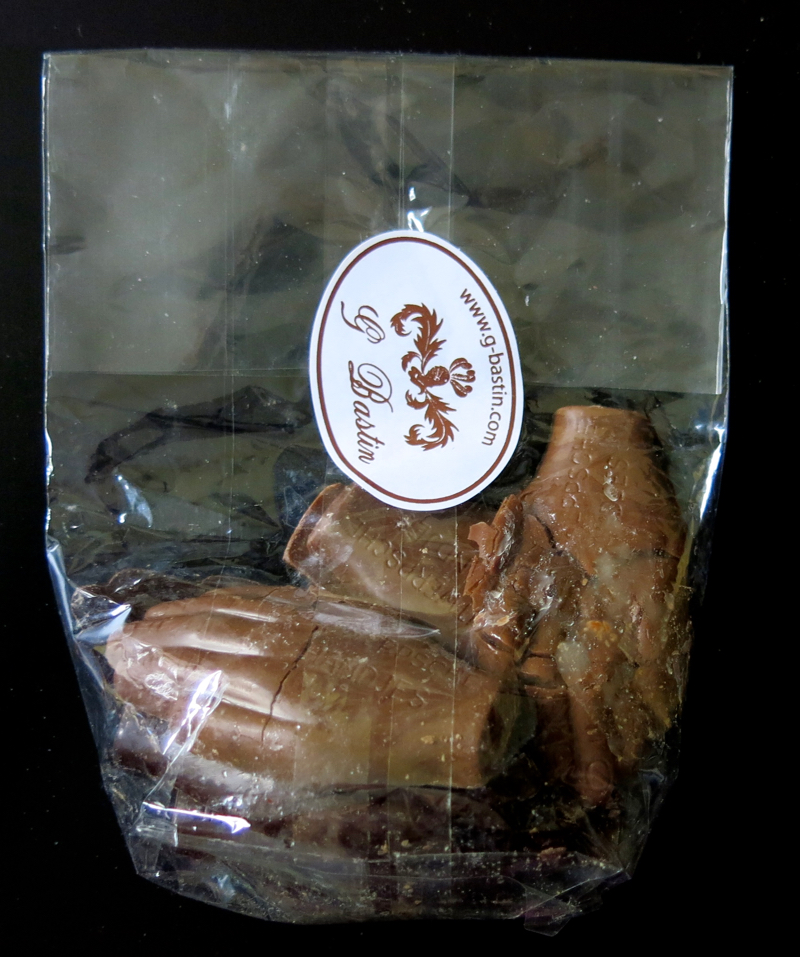
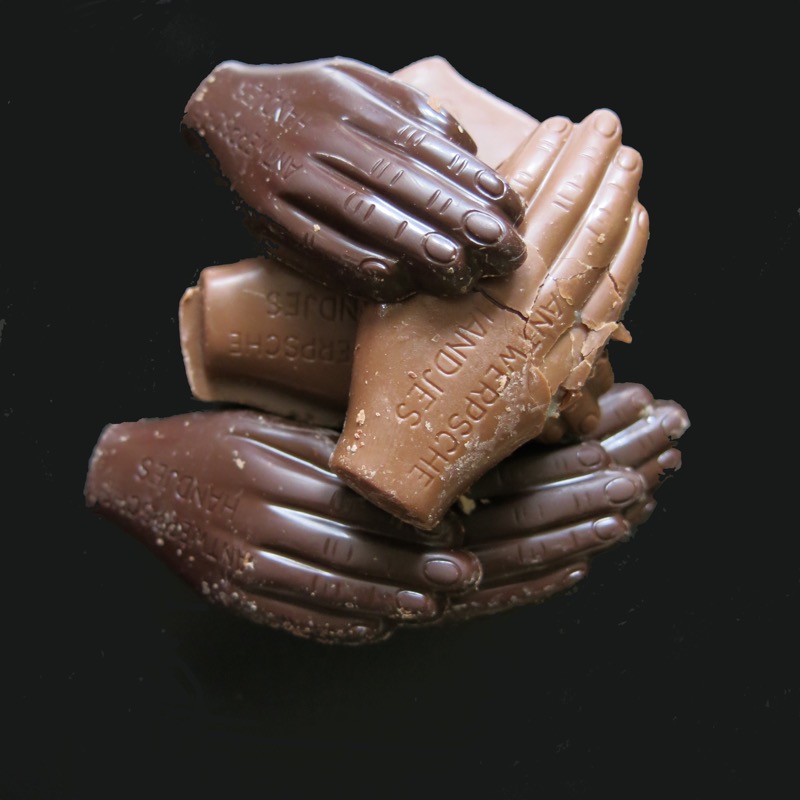
Happily chatting while Vanja purchased, we got home without any Antwerpse Handjes! How did that happen? I was ever so disappointed. And, it was not my intent to keep the chocolate hands for three more weeks until we got home. Oh, no. I would keep some, of course, but planned to gobble up a few that very evening.
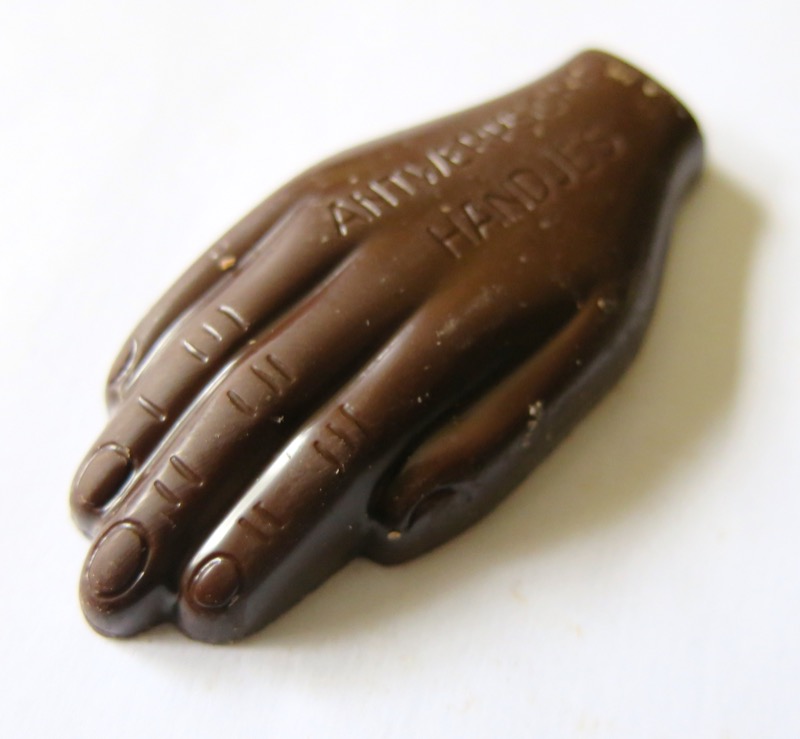
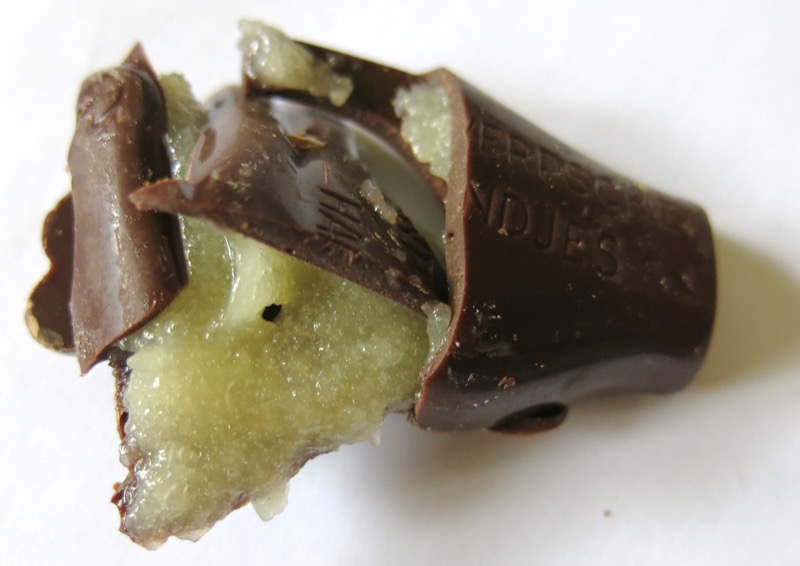
Life isn’t like that. Only so much one can eat and there seemed never another time to get them out for a photo opp. Though, I thought of it many times, they traveled back home with us, and you will see, not in such great shape, either. But, delicious? Yes!
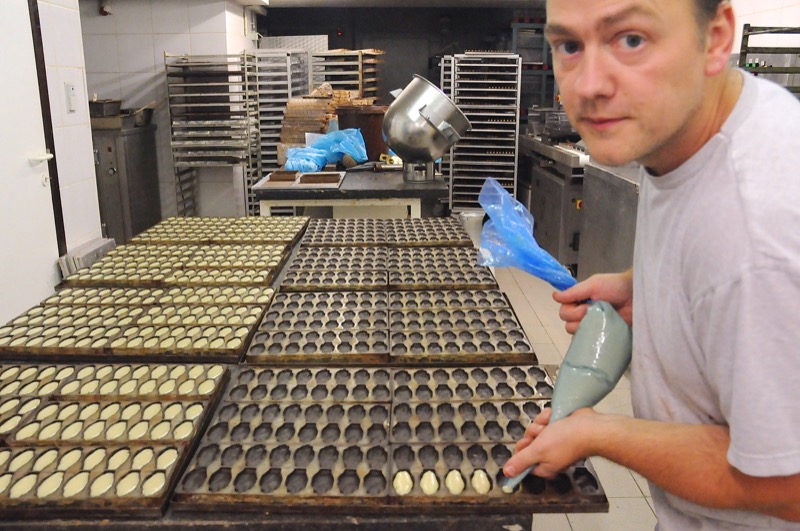
And handmade. Tradition can be a beautiful thing. (Above photo from the municipality website.)
Flemish Food: Elixir d’Anvers
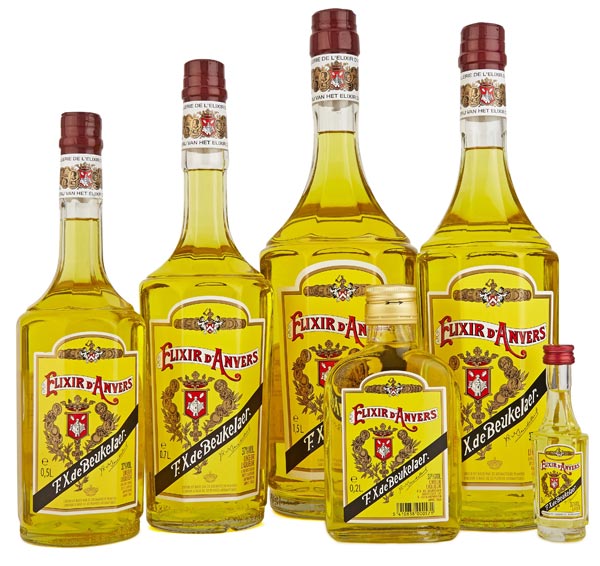 In the same shop window, way above, just behind the Antwerpse Handjes are various bottles of Elixir d’Anvers. Ariane said it was only made and sold in Antwerp and really delicious with Cava. Of course, I said, “What is Cava?” And she said, “Oh, I have so much to teach you!” Cava is Spain’s Champaign like Prosecco is in Italy. Spain’s sparkling wine. “We would never drink Prosecco, here!” Of course, understanding the Spanish hold on the area for so long, Cava made sense. It might even be tasty, too. I’ll have to buy some and have it with my Elixir d’Anvers. Yes. Bought a small bottle. Shared tastes with Vanja’s family and mine. De-licious! Very syrupy and very sweet. Anise. Mmmm! I’ll have to share it with my gal pals, next. It has been distilled since 1863 and is prepared from “32 plants and herbs from the four corners of the world” to “impart it its unique taste”. Its taste is licorice, but it is a really smooth, lovely rich licorice, so maybe those 32 plants play a role there. Strongly recommend a taste, if not a buy. Buy a tiny bottle, at the very least, if you like to “taste your way through your travels”. The licorice liqueurs are vastly different in every country: Sambucca in Italy, Pernod and Pastis in France, Ouzo in Greece, now Elixir d’Anvers in Belgium and more.
In the same shop window, way above, just behind the Antwerpse Handjes are various bottles of Elixir d’Anvers. Ariane said it was only made and sold in Antwerp and really delicious with Cava. Of course, I said, “What is Cava?” And she said, “Oh, I have so much to teach you!” Cava is Spain’s Champaign like Prosecco is in Italy. Spain’s sparkling wine. “We would never drink Prosecco, here!” Of course, understanding the Spanish hold on the area for so long, Cava made sense. It might even be tasty, too. I’ll have to buy some and have it with my Elixir d’Anvers. Yes. Bought a small bottle. Shared tastes with Vanja’s family and mine. De-licious! Very syrupy and very sweet. Anise. Mmmm! I’ll have to share it with my gal pals, next. It has been distilled since 1863 and is prepared from “32 plants and herbs from the four corners of the world” to “impart it its unique taste”. Its taste is licorice, but it is a really smooth, lovely rich licorice, so maybe those 32 plants play a role there. Strongly recommend a taste, if not a buy. Buy a tiny bottle, at the very least, if you like to “taste your way through your travels”. The licorice liqueurs are vastly different in every country: Sambucca in Italy, Pernod and Pastis in France, Ouzo in Greece, now Elixir d’Anvers in Belgium and more.Flemish Food: Philips Biscuits
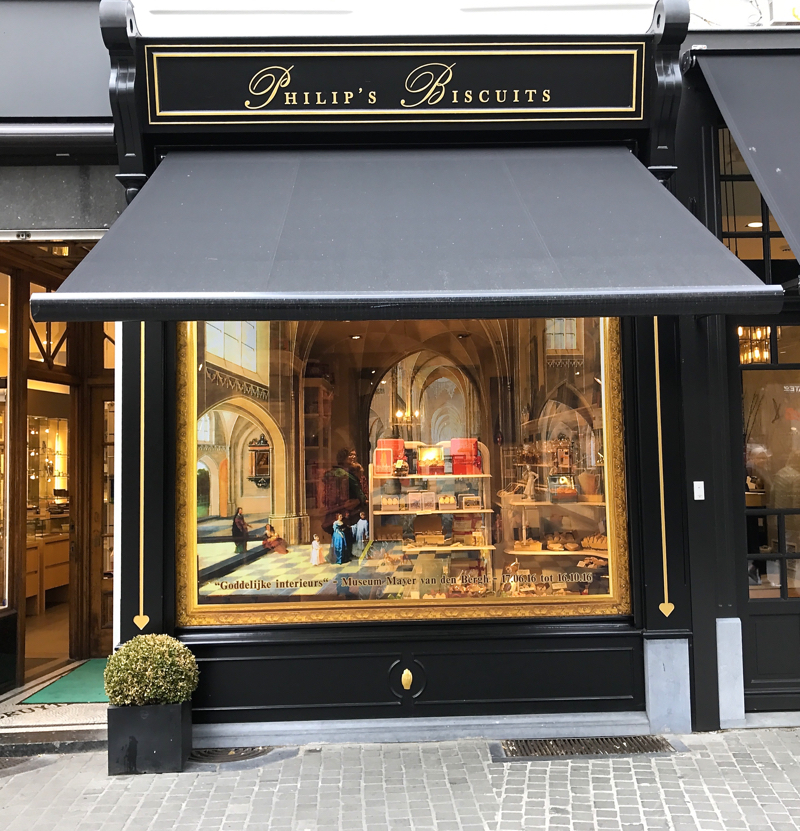
Enroute to Rubens house, quite a while later, at a T intersection in our walking route, there it was! “Philip’s Biscuits”! And, just two doors down, “Goossens Bakery” with quite the line up in front. “Oh, do we have time to stop?” As both were on my “curious list”. Not right now. You can stop on the way back. You will have lots of time then.
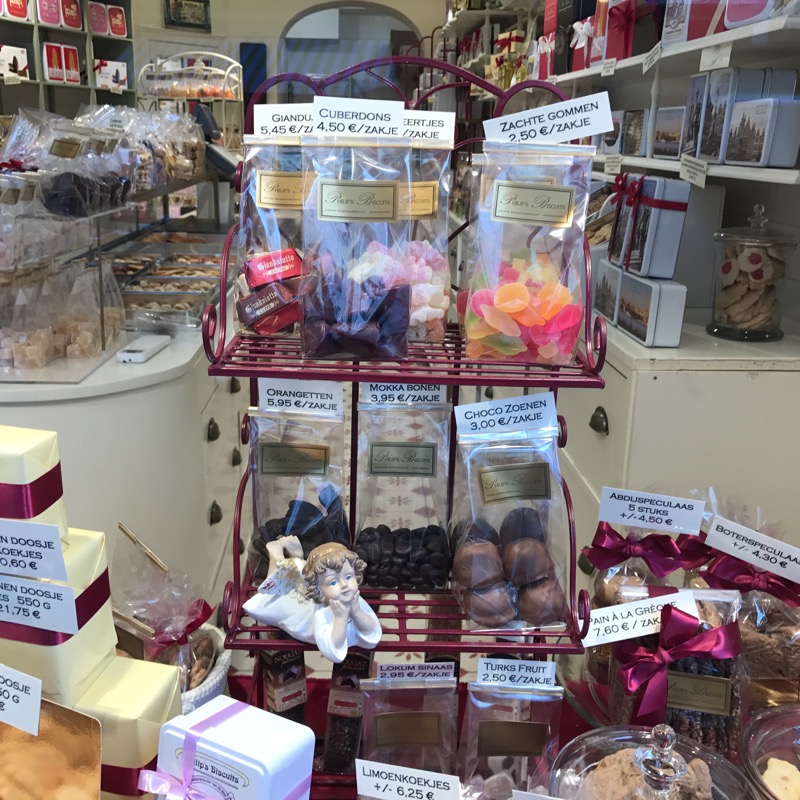
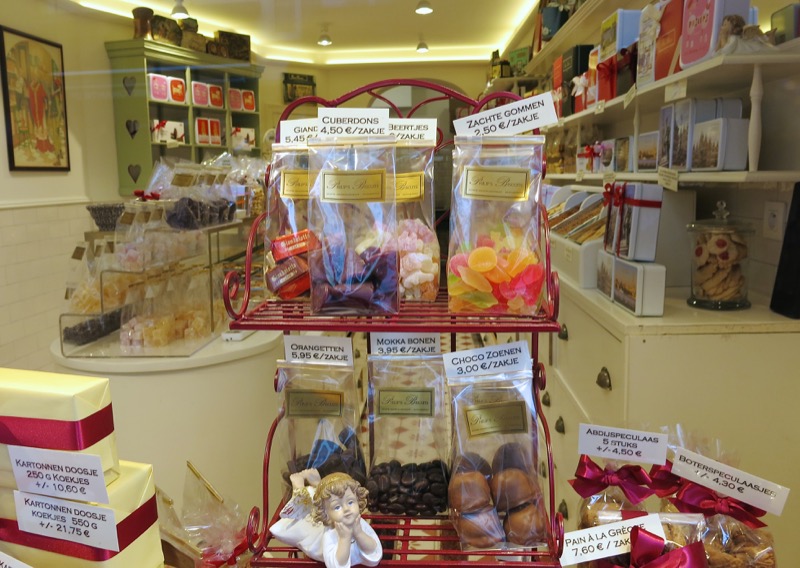
However, I am not a patient person. Vanja pryed my nose away from the window as I got the above photos, then off to Ruben’s House we went. Of course, that was my priority, but I do have a food blog and wanted to document my finds.
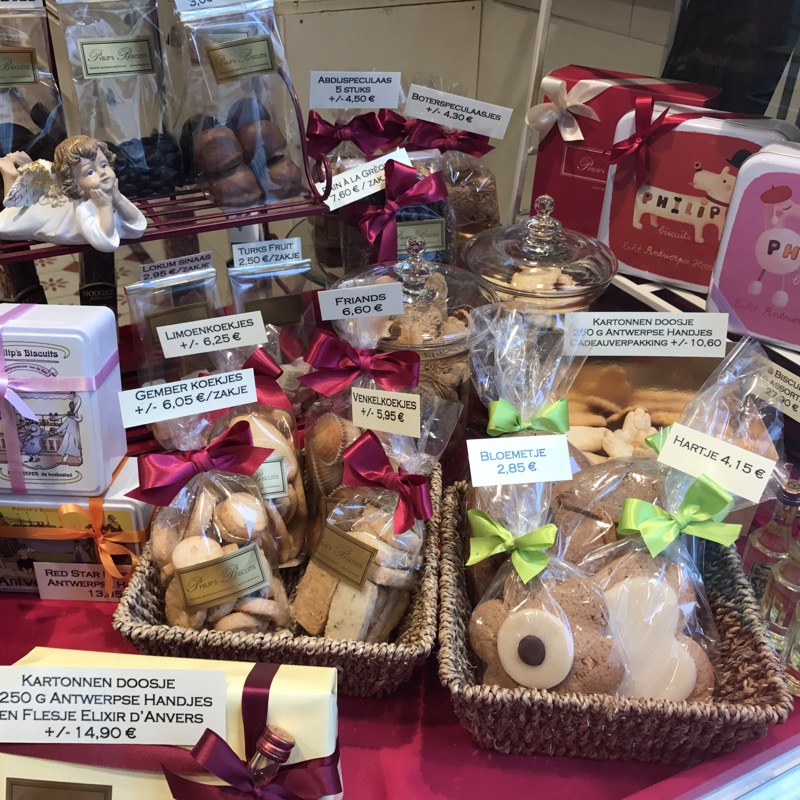
Back, and completely enthralled, enchanted and so much better educated about the artist. His home is hardly a home. I have been to Rembrandt’s home in Amsterdam. That is a home. And, a fairly nice one. Ruben’s house is a palace. I did not expect that. I did not understand the difference in their living fortunes, or lack thereof, at the time. Rubens painted for the church. Rembrant painted for the people.
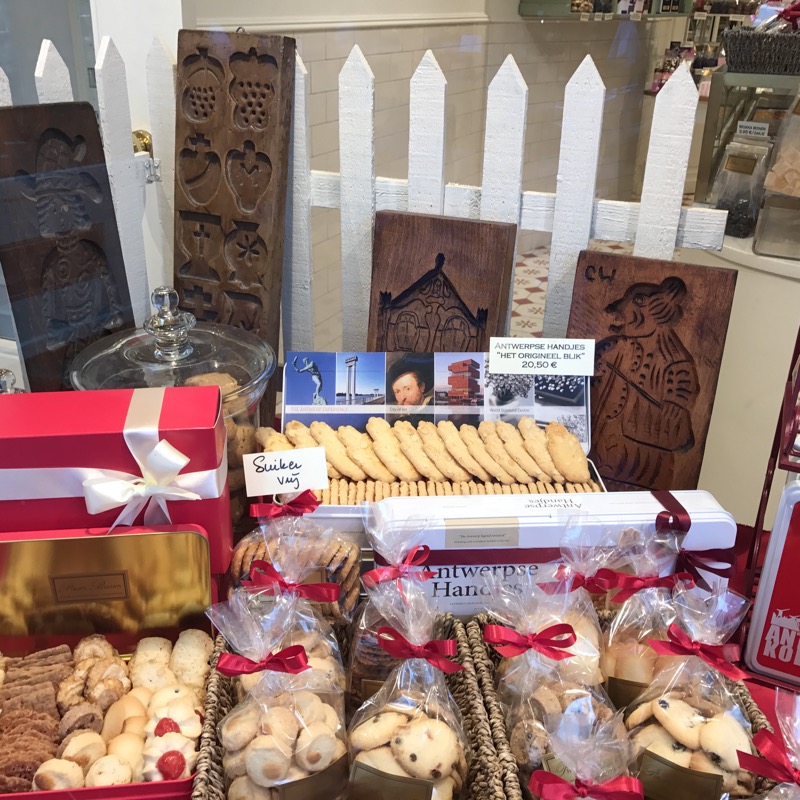
More window licking.
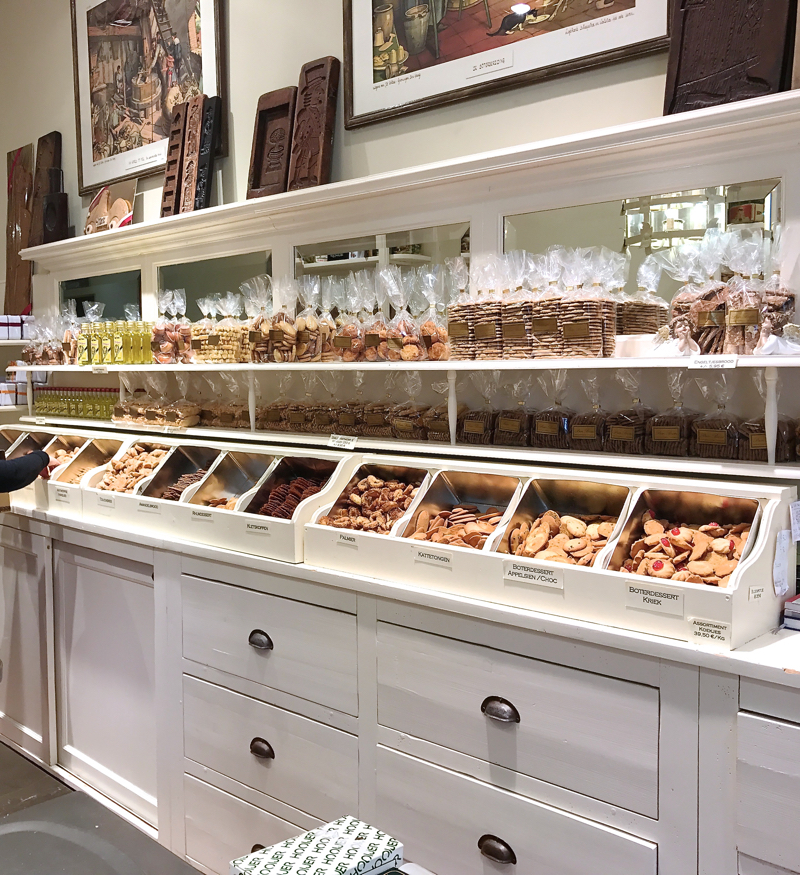
A very refined, yet tiny long narrow shop.
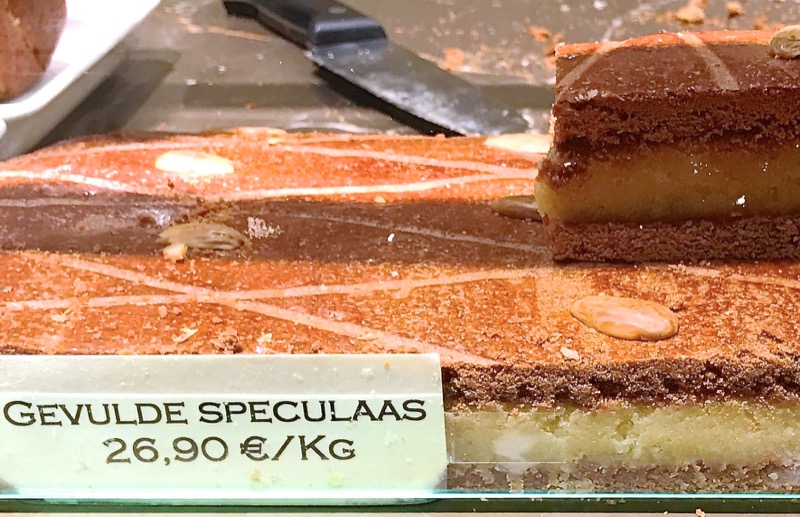
The above cake, or pastry, is making an appearance wherever we have traveled throughout Belgium and the Netherlands. I bought two different kinds at the Delft market and eventually brought some home for the family as I couldn’t resist it at the airport: it is a speculaas seasoned cake filled with marzipan.
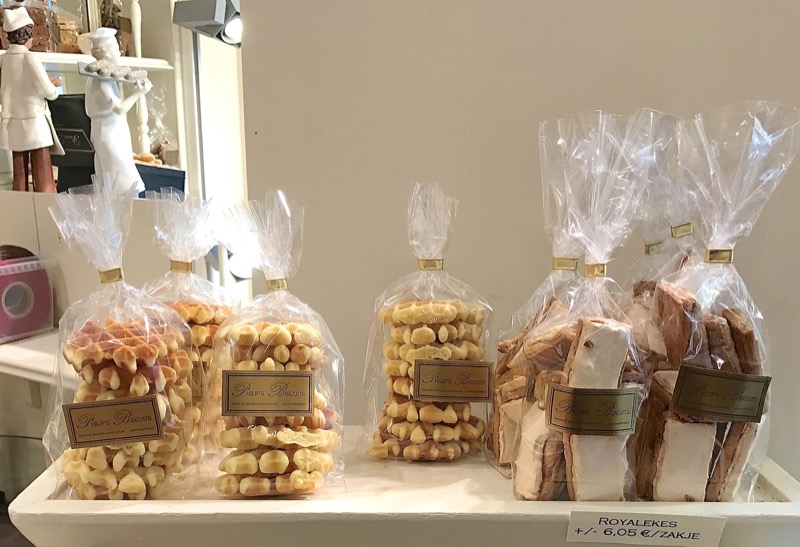
All different shapes and sizes of waffles seem to be everywhere. Below, the gal is filling a box with their famous biscuits for a client. The entire shop is row after row of bins of biscuits behind the counter that are delicate and perfect and she is carefully placing each in the box as he chooses his flavours.
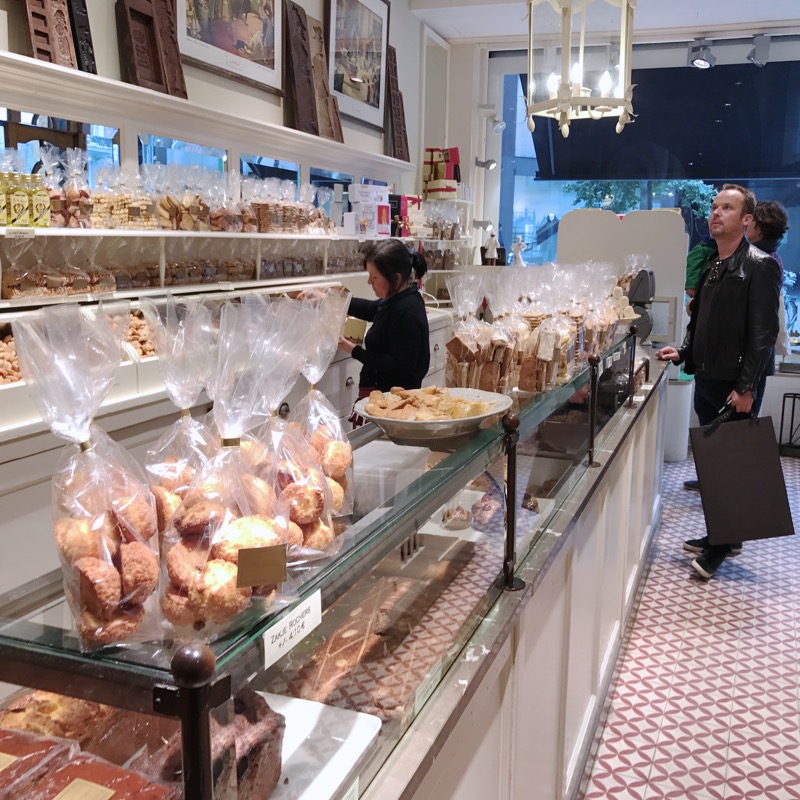
They all looked very similar to me. Lighter or darker, varied shapes, but similar. However, each is a very traditional well known personality to the locals.
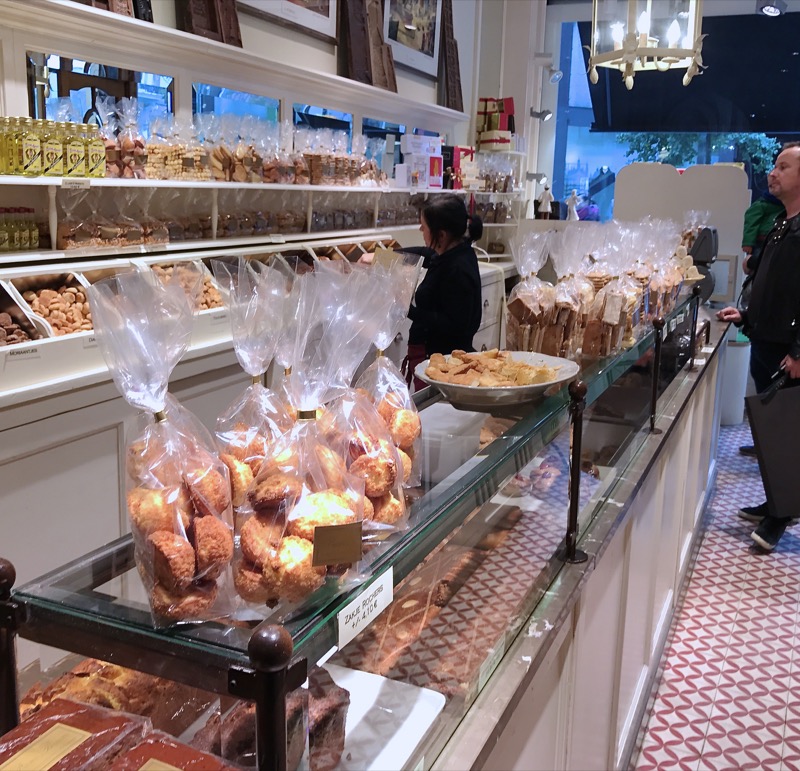
Do you see the plate above with the sample? So did I! Remember, one can only eat so much… and I did intend to buy something. I always do if I find something local and a favourite, unless there are samples! There was a cookie type pastry log sliced on that tray filled with marzipan. Did I mention I love marzipan? Good thing as it is everywhere in everything in this region. Oh. My. I took a slice of the sample while waiting my turn. The outer biscuit was buttery, crisp, and gave way to a sumptuous almond filling. Pure bliss.
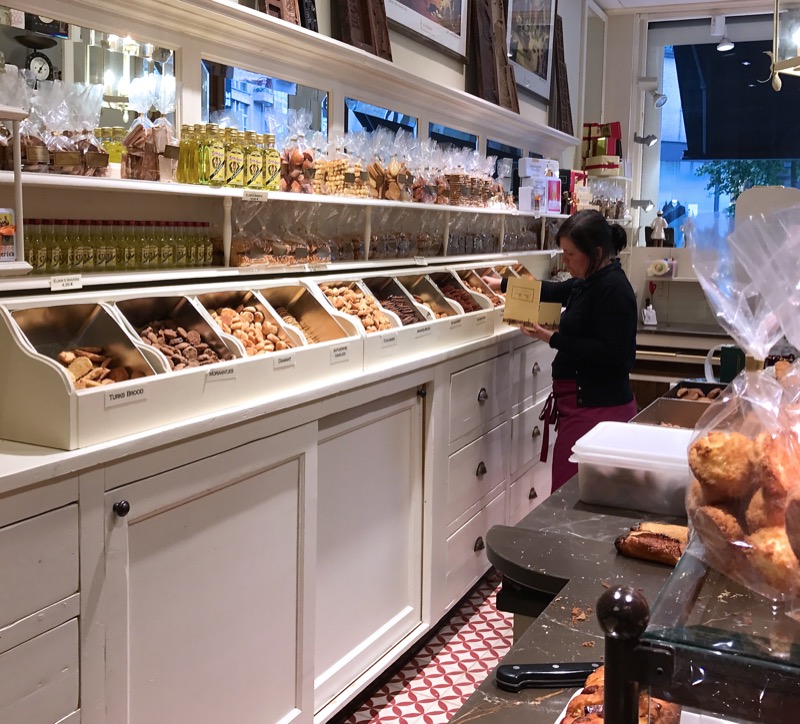
I wanted to buy the entire log. Then it came to me: “Start the car!!! Start the car!” … “Let’s go, Vanja. Out, come on, let’s go!” What? He was stunned.
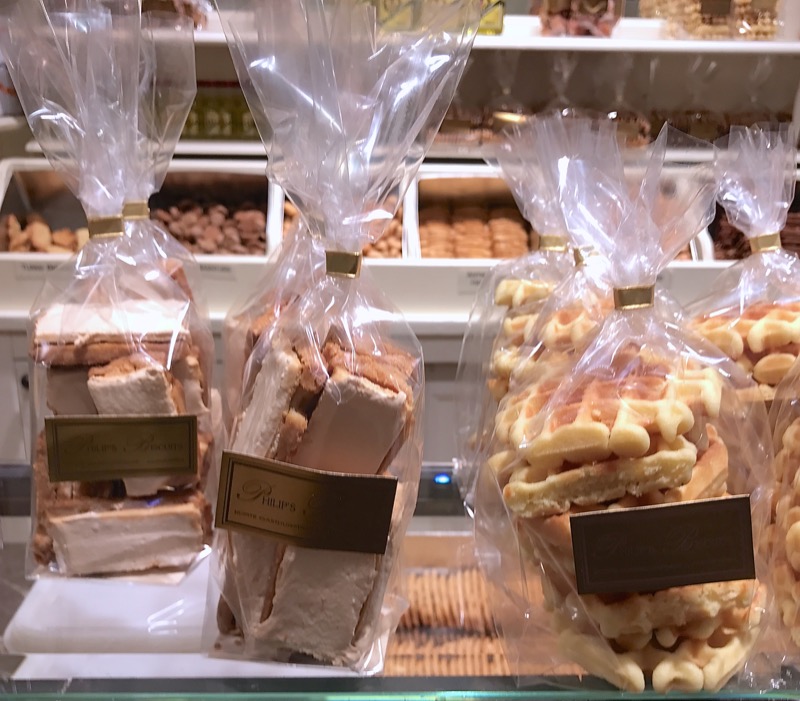
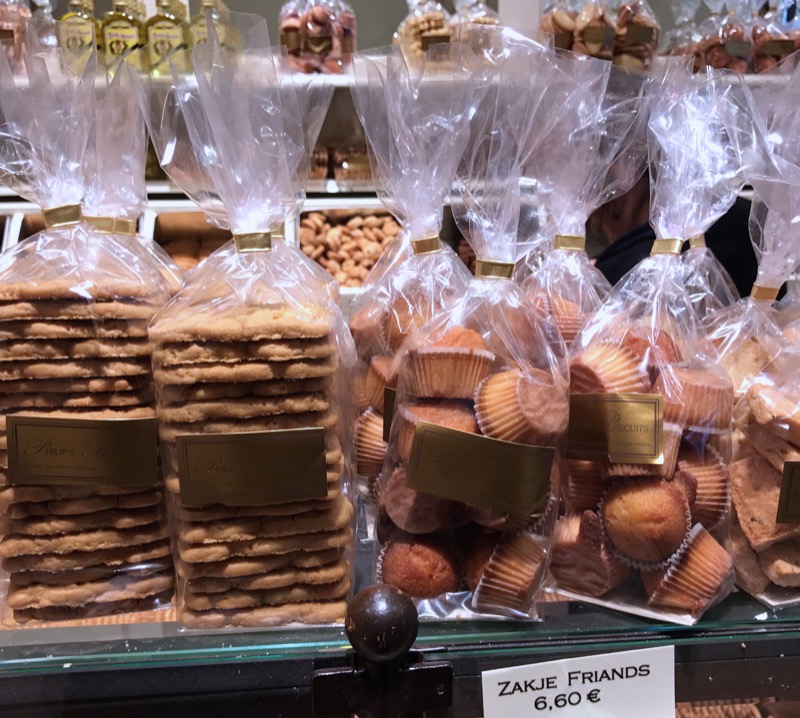
I was leaving a local specialty food store without a purchase? He just stood there looking at me. I pulled him out of the store and turned to see the two left behind in the store shake their heads and shrug at the pathetic tourist who tasted, took lots of photos, and ran.
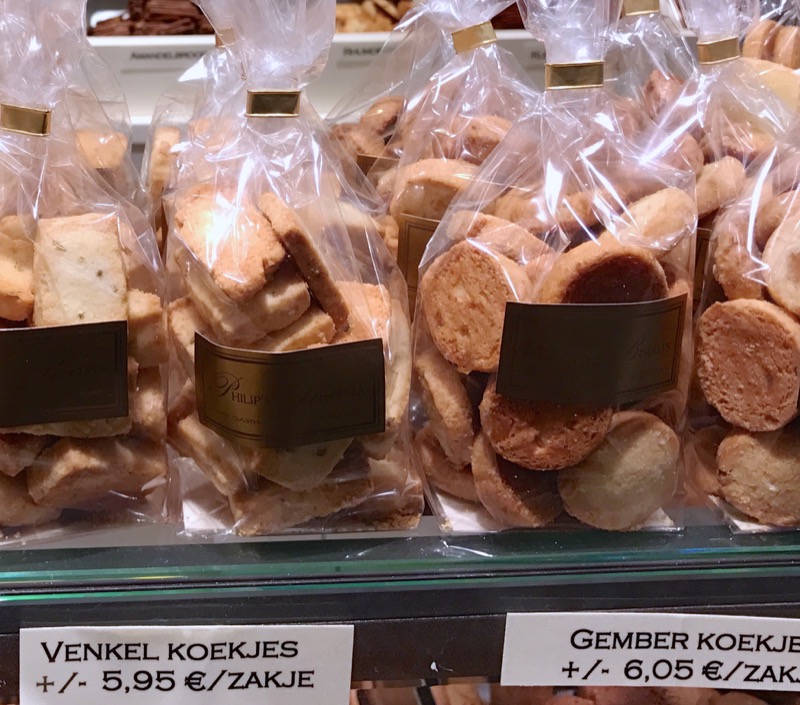
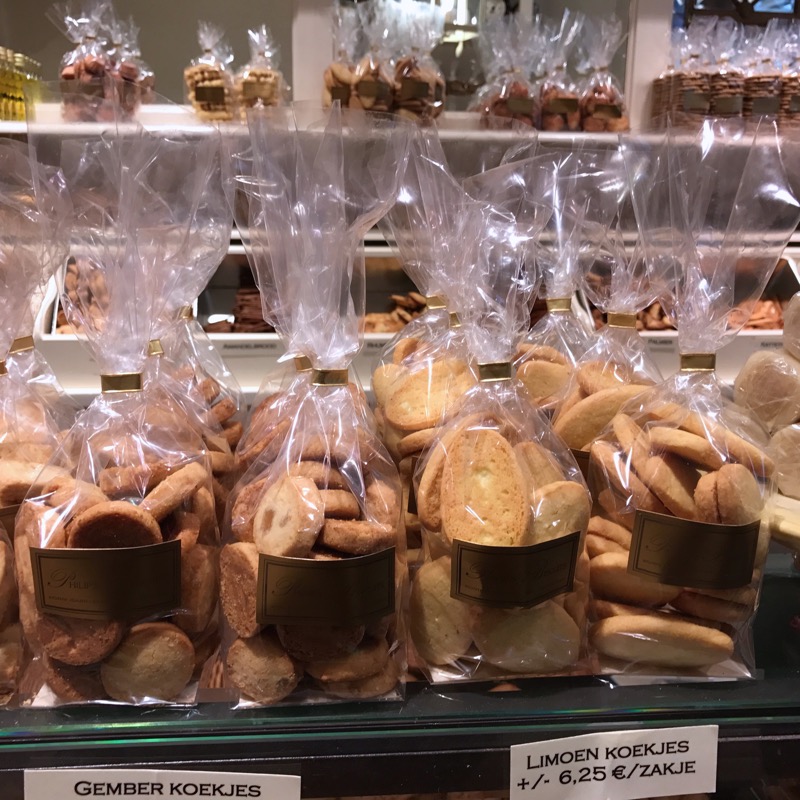
What came first, the city’s love of biscuits, or Philip’s? I might think it had to be Philip’s if I didn’t know that Belgium has had a distinguished culinary history steeped in a tradition of the finest food in all categories. Famous for chocolates and pâtisseries; the biscuit shops are simply an extension of that passion and history. Maison Dandoy, founded in Brussels in 1829, is the global flagship store for biscuits, speculoos, marzipan and cakes. Spend some time on its website, and you will learn a lot about the refined cookie biscuit tradition of Belgium steeped in tradition.
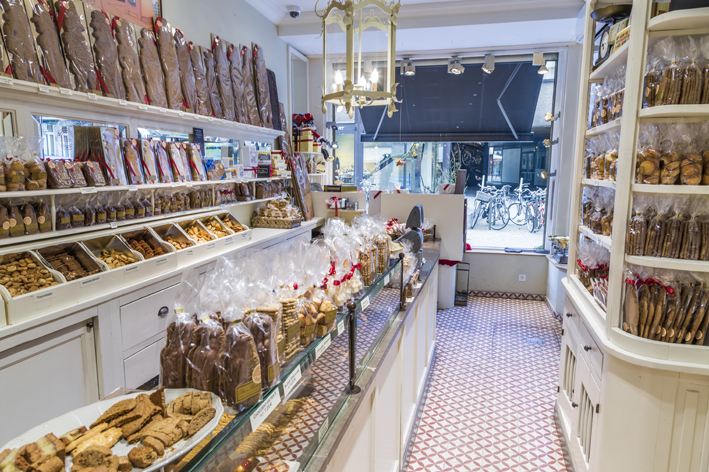
Philips has a Facebook page, (photo above from there) but nothing more than a one page website, which I found disappointing. It was opened in 1995 by baker, Philip De Corte and his wife. It is Antwerp’s answer to Philip’s Biscuits and the local go-to biscuit shop. I wish I was as informed when I was there as I am now, about what I “should have” bought, tasted, been looking for and wanted to see. I had no idea at the time what kinds of cookies or biscuits to ask for and that were traditional, but the Dandoy site provides a host of information on that and I witnessed similar products in the lovely bins at Philip’s. Apparently there can be quite a wait, and there are always treats to sample on the counter.
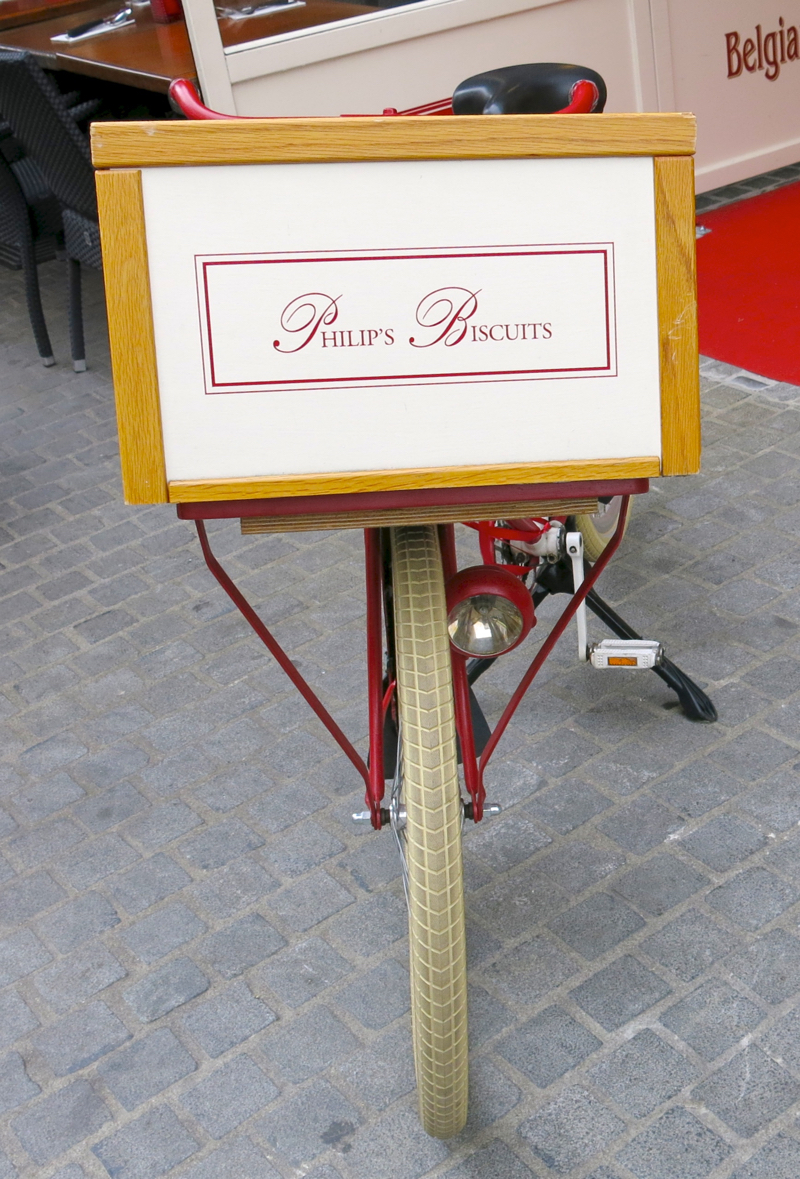
The gingerbread speculoos and all types of gingerbread and speculoos are most traditional within Belgium and the Netherlands; however, there are several sets of biscuits that have been loved and cherished in the area for years: the Bernardin, Biscotte Sucrée, Biscuit Cuiller, Croquant, Dessert Biscuits (same batter, different shapes), Feuille de Palmier, Financiers, Florentine, Langue de Chat, Macaron, Orangine au Chocolat, Pain D’Amandes, Pain à la Grecque, Palet au Gingembre, Pale Caramel Beurre Salé, Palet de Dame aux Raisins, Patience, and Sablés. That list is only the biscuits, and I have been familiar with many of them and most definitely will be finding recipes and making others for my Christmas Cookie platter this year. I didn’t buy or taste them, but I am motivated, inspired and feel a deep sense of place here as this culture clearly has defined what it likes and refined and perfected each morsel. At home, I work to do the same with our traditional family cookies, particularly at Christmas.
Flemish Food: Goossens Bakery
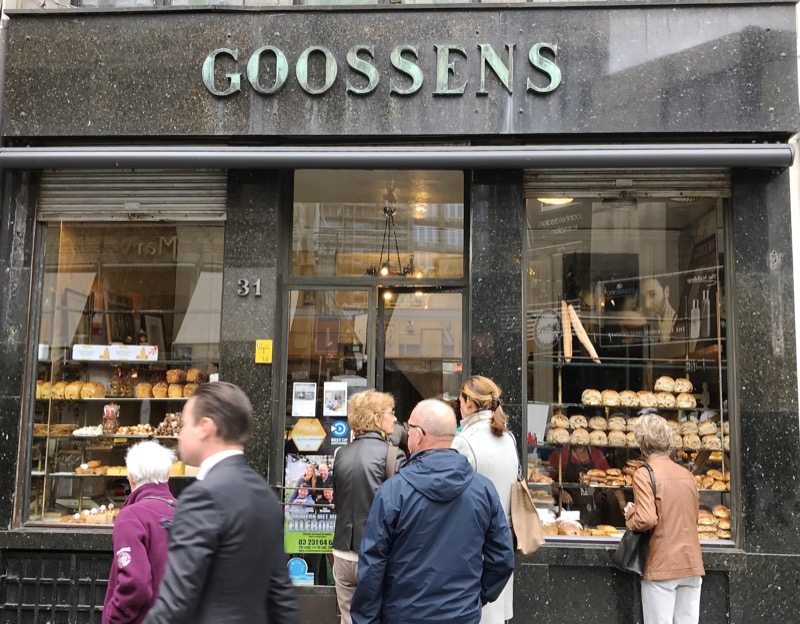
Lineup much shorter later in the day, I plopped myself in it. Knowing it is famous for its Roggeverdommeke (rye bread filled with raisins) in the right window, oh, how I wanted just a taste to understand what people found worthy of lining up daily for here. Ariana had said the line up might be long, but goes fast, as the store is so small, and no one lingers as the line up is long. But, I wanted to linger!
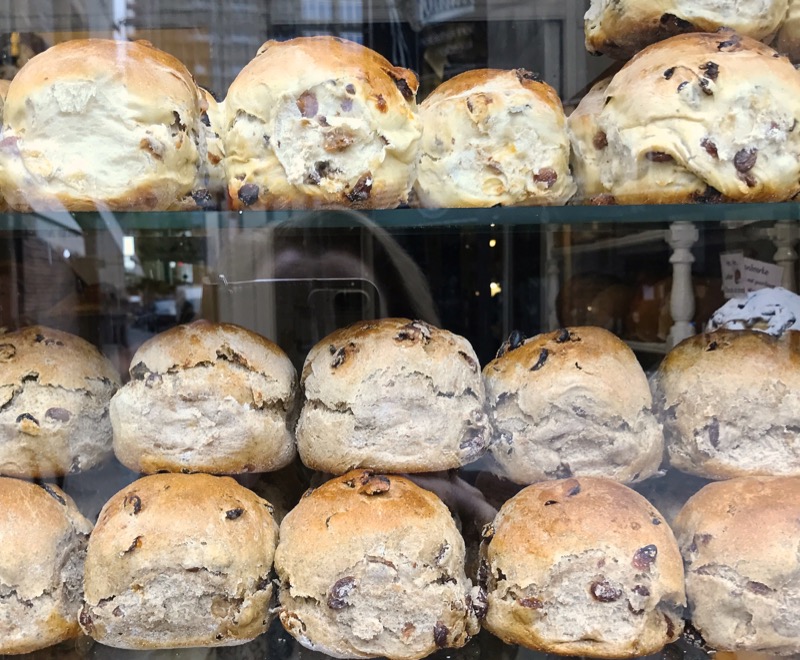
The Goossens bakery was founded in 1884 by Philippe Goossens and remains a family business with the fourth generation still working in the business, in the same location, producing the traditional artisan products using the heritage recipes and traditional methods: “slow kneading processes, prolonged and frequent rising time and a traditional deck oven are our secret.” Darn! I could do all that, but no deck oven here, though am quite sure I would not need one for a loaf or two. It is the Roggeverdommeke that is their number one seller and the one item that people line up for as its reputation is epic. This is a small round light rye loaf filled with raisins.
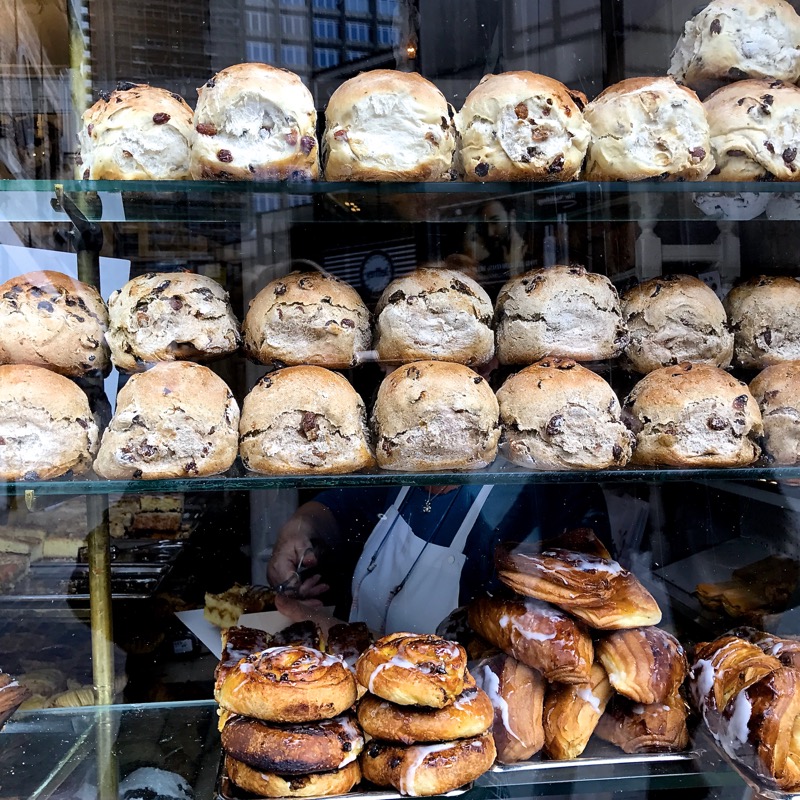
Specialties include various other types of bread, as well: sugar bread, stollen, succadebrood, chocolate bread … and I would tell you more, but there is not a website. There is only the Yelp page. (There are other Goossens Bakeries, but not in Antwerp, and a chocolatier, but not affiliated with this family.) I read that their butter cakes and Sint Niklaas big biscuit hearts are also a must buy. They do sell classic butter desserts, sometimes mixed with the best chocolate, traditional pastries like sneeuwpateekes (miniature snow cakes?), marble cake, Alcazar, cheesecake and apple pies. I wish I had known about the heart shaped thick biscuit made with the old original recipe with the initials PH on it.
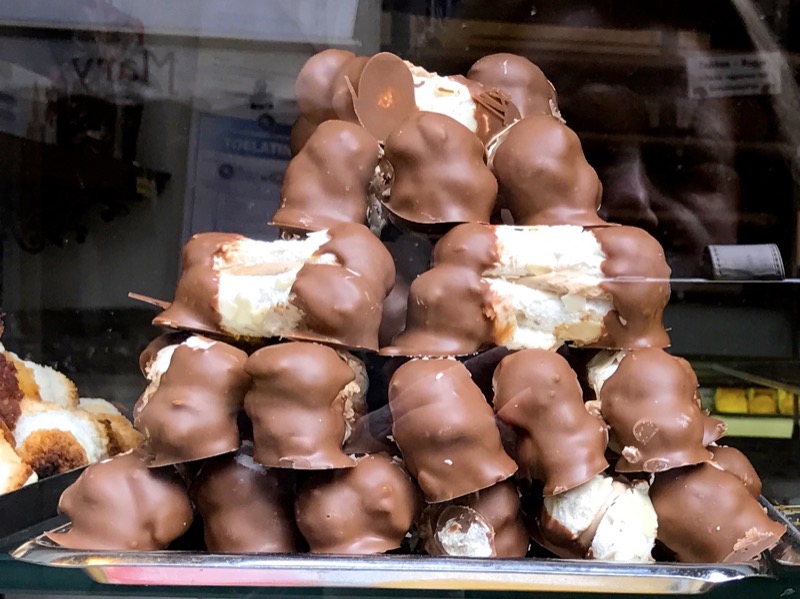
But, I did not. I knew of the bread, and pushed my way to the side of the line up so I could stand out of it and inside of the tiny store and try to see what was there. Bokkenpootjes or Goats Feet! Mmmm! Not sure if this is specific only to Flemish food specific is of the greater area; either way, it also belongs here.
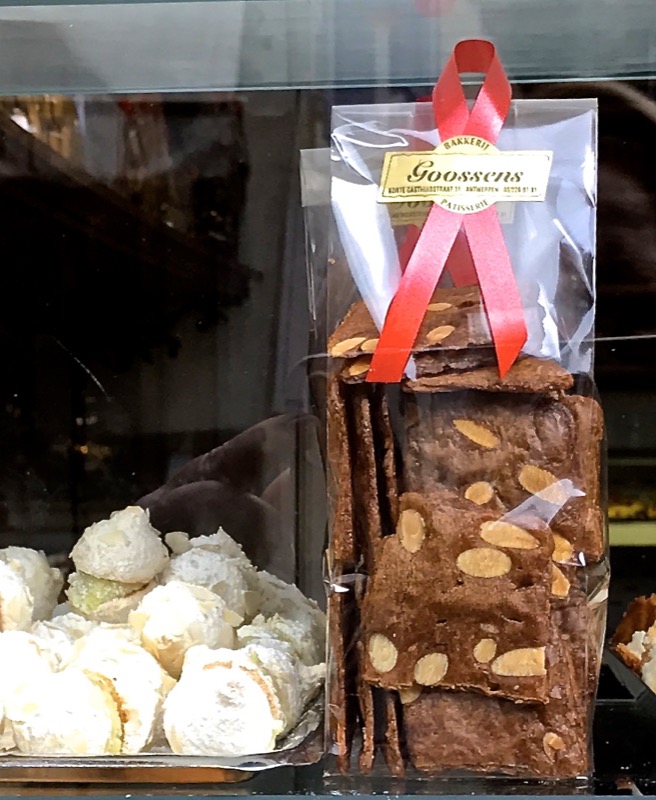
A lovely bag of very traditional Pain D’Amandes biscuits, and I am guessing, to the left, above, the sneeuwpateekes?
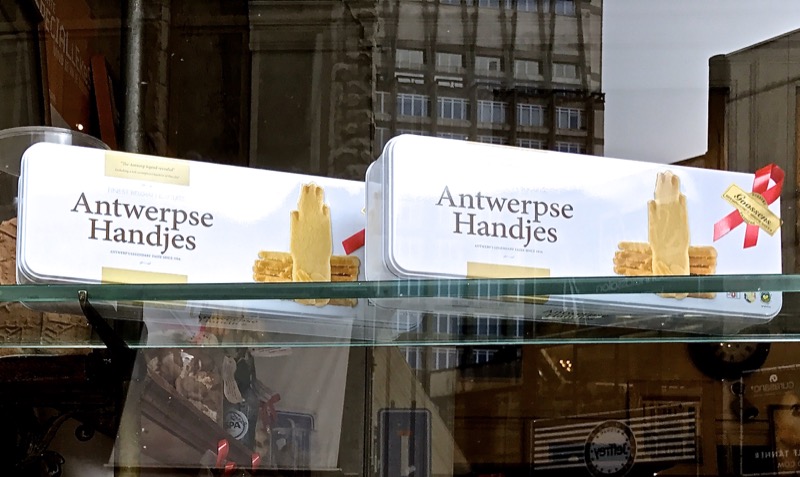
Almost every store who sold food had the Antwerpse Handjes in the window.
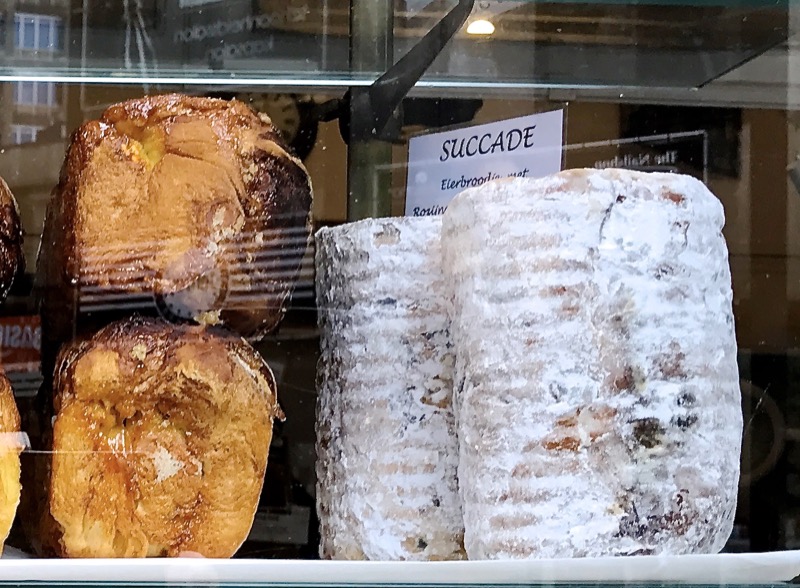
Yet, from being there, I would say Goossens is about the bread, more than anything else.
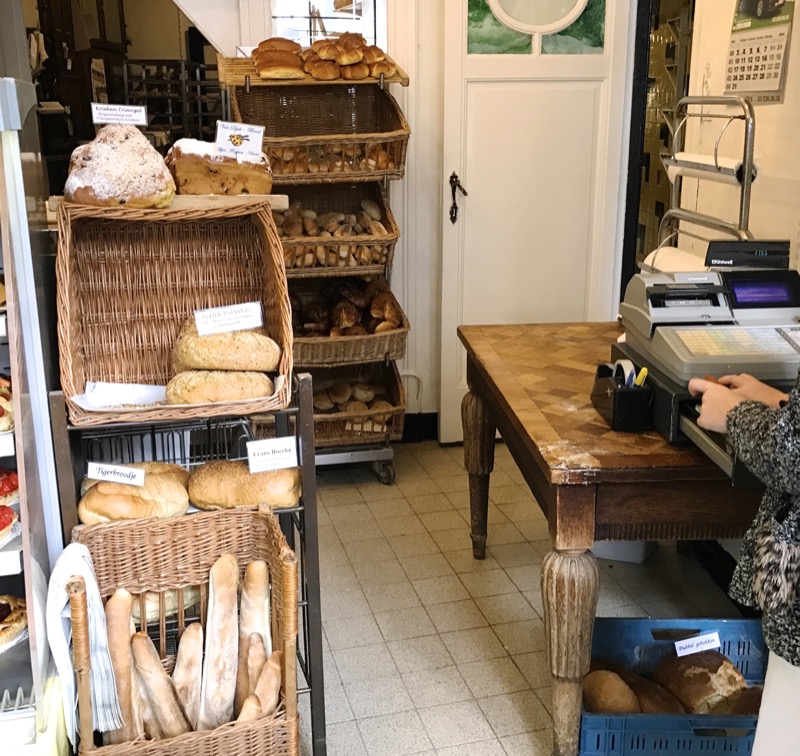
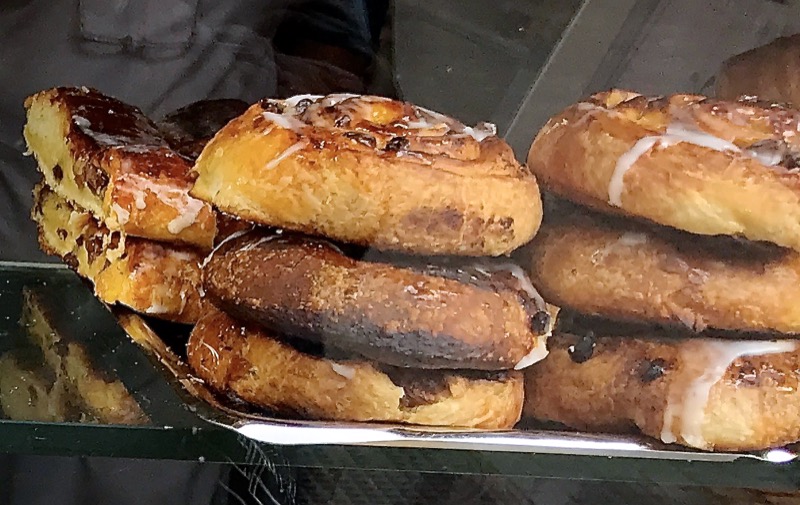
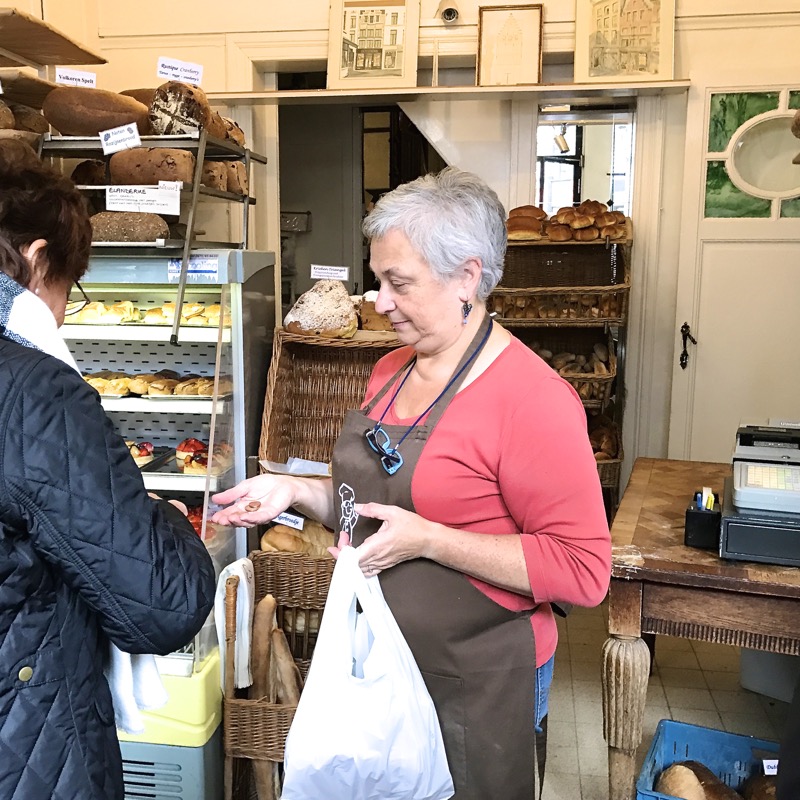
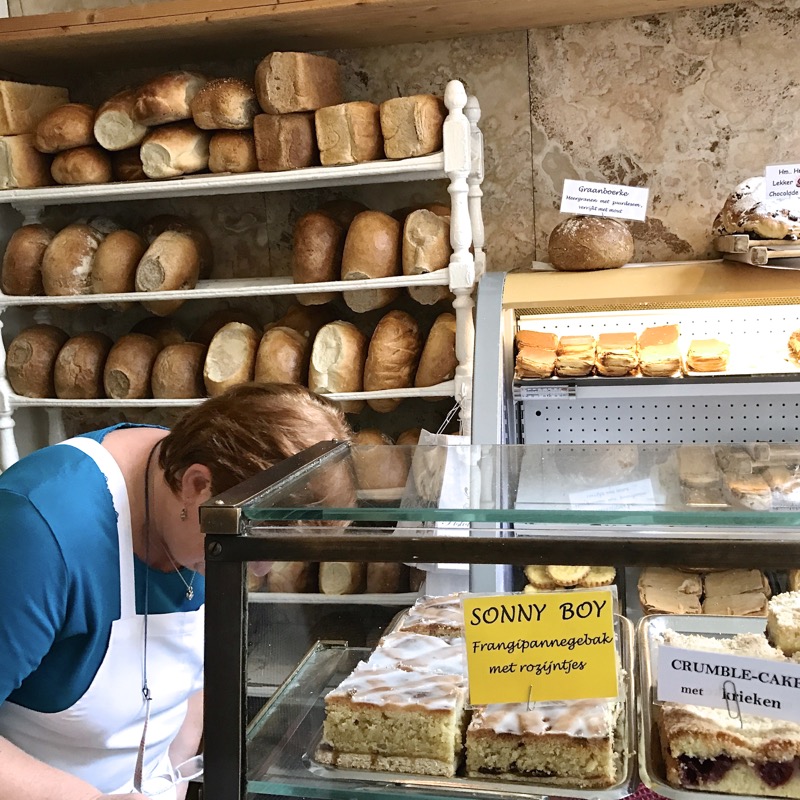
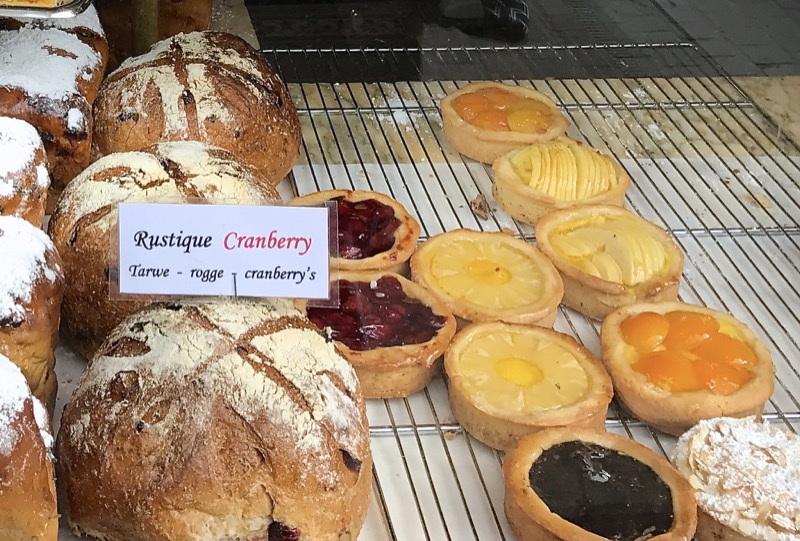
Yet, though I make and bake homemade bread and find great solace in it as well as a compulsion to make it as a Canadian Prairie Girl, the tarts are just so much prettier to look at!
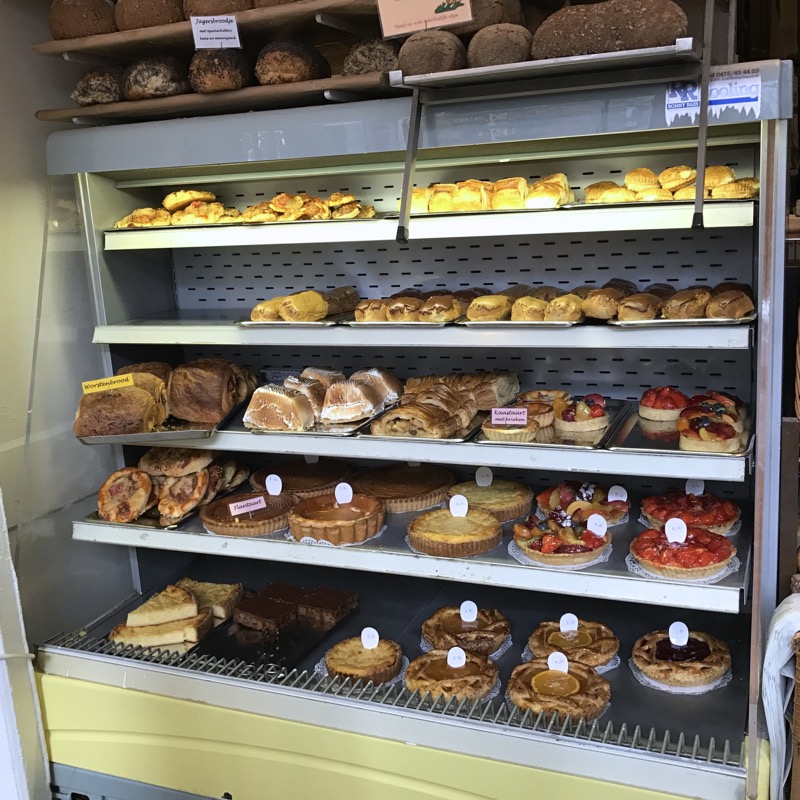
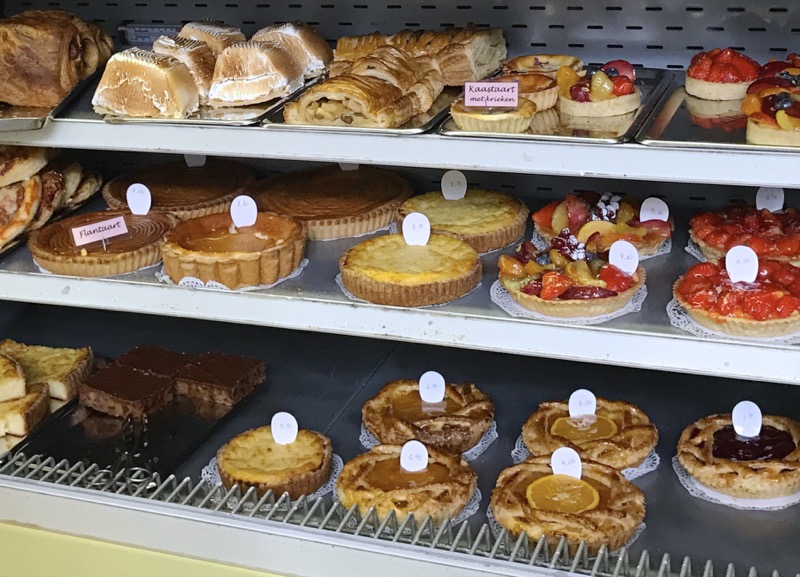
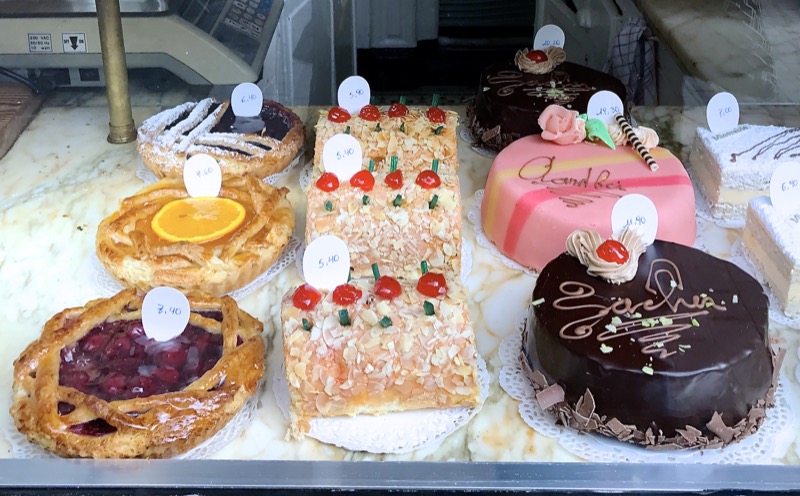
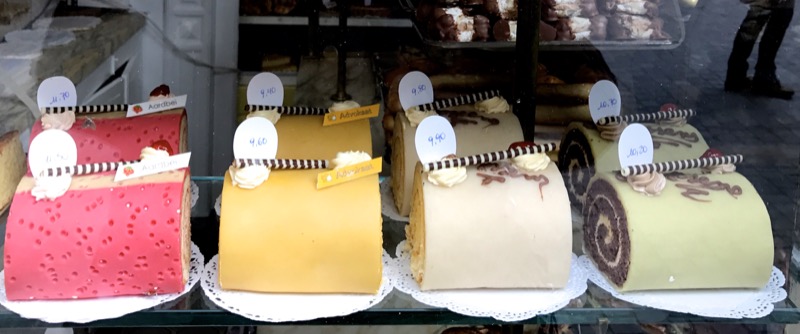
And the cakes. Cakes like I had never seen before. Each, so perfect.
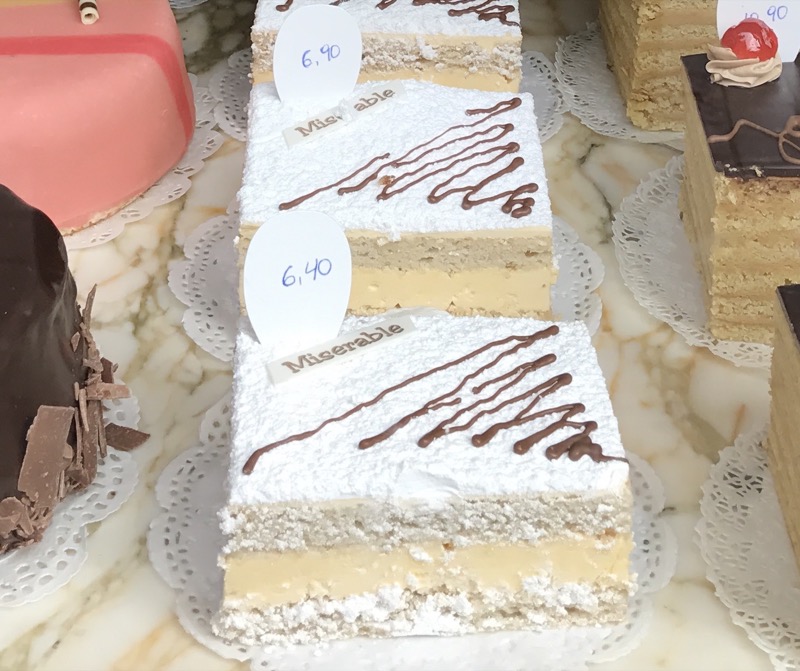
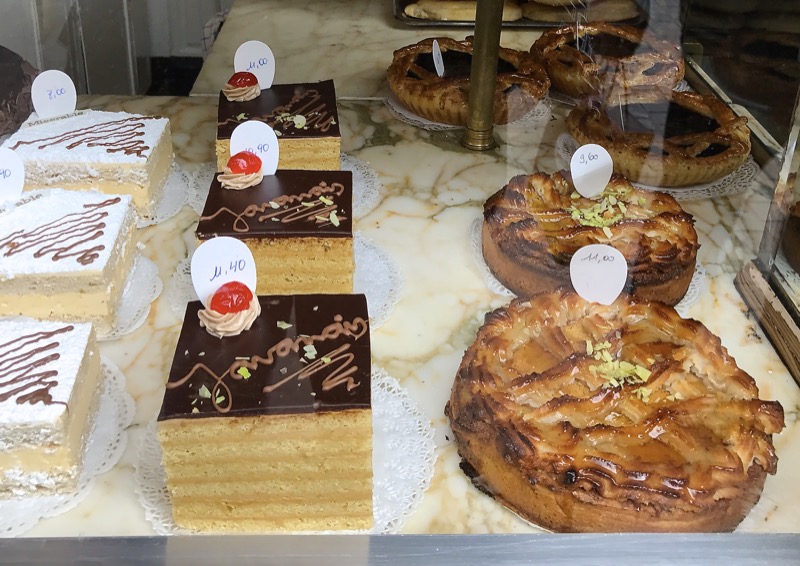
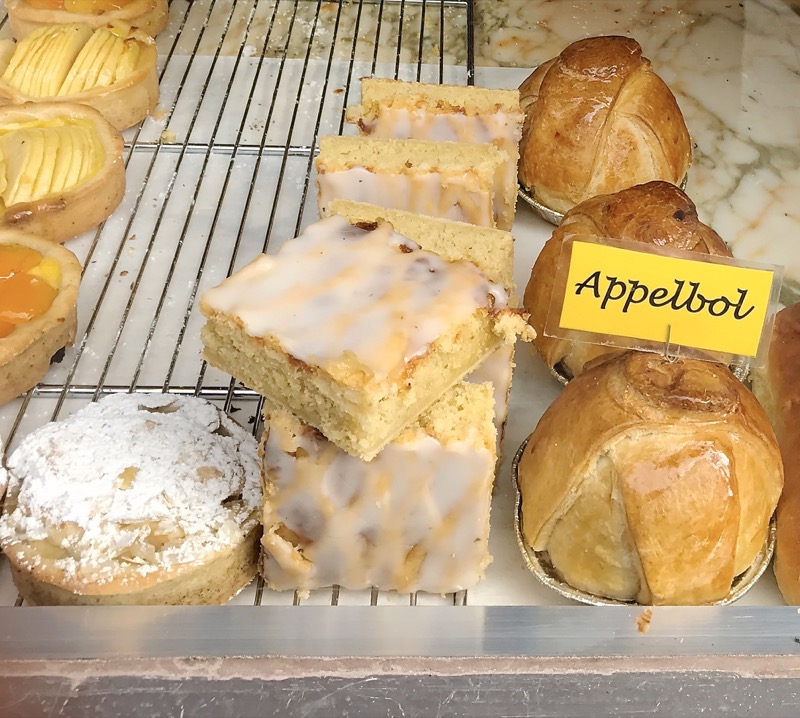
I could not spy the butter cake, unless that is it, above? But, the Appelbol! I can make that! Vanja would love it. Is that not gorgeous. Now, it is made with a pastry, not a puff pastry, but a very different, very special and maybe very difficult to make pastry. I will try. Yet, if you are reading this and come from Belgium and know how to make this pastry, can we bake together? Will you teach me?
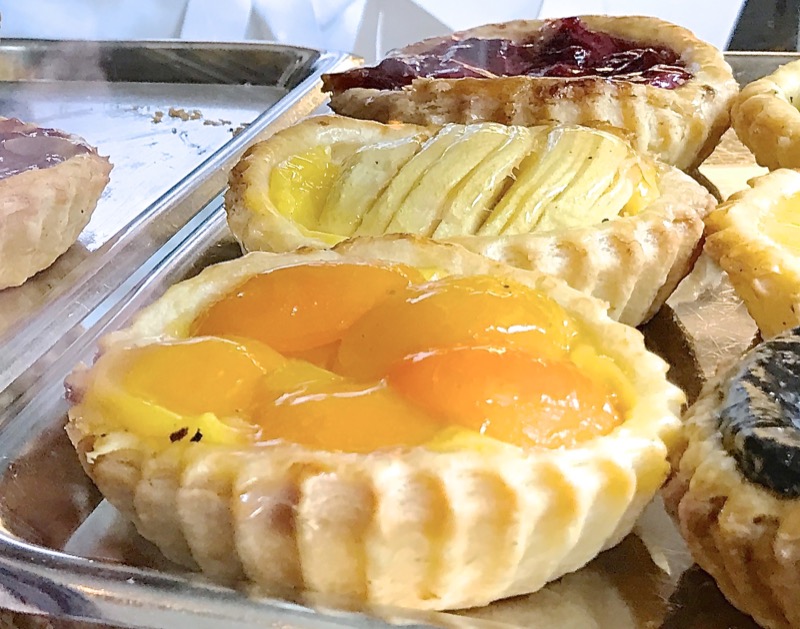
I know how to make French tarts list the ones above, yet I can see the pastry shells are different, and likely, the fillings, as well.
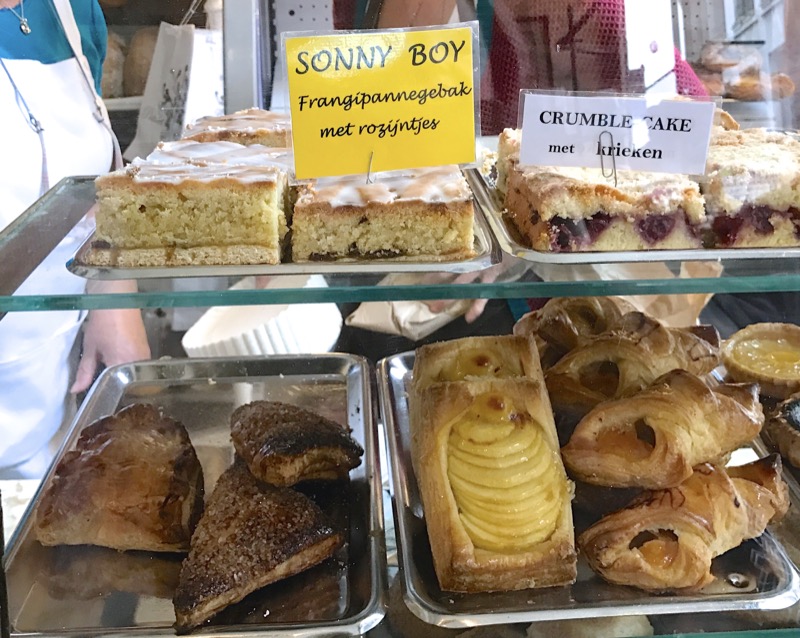
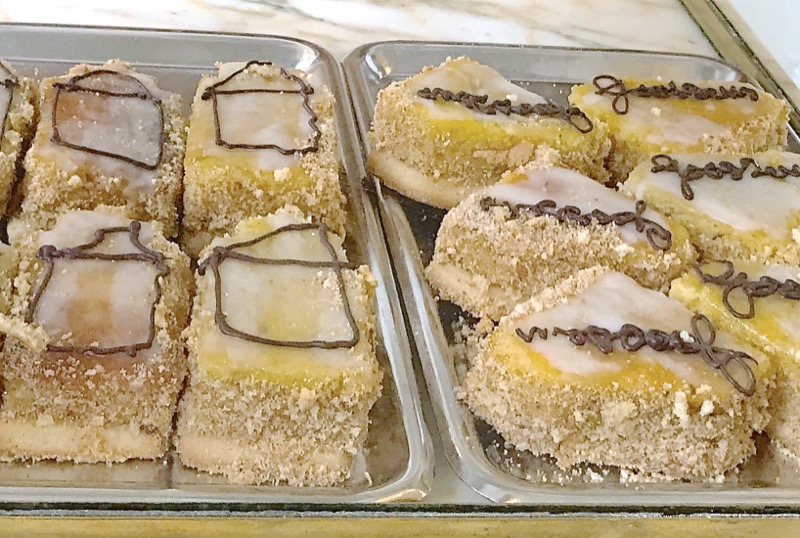
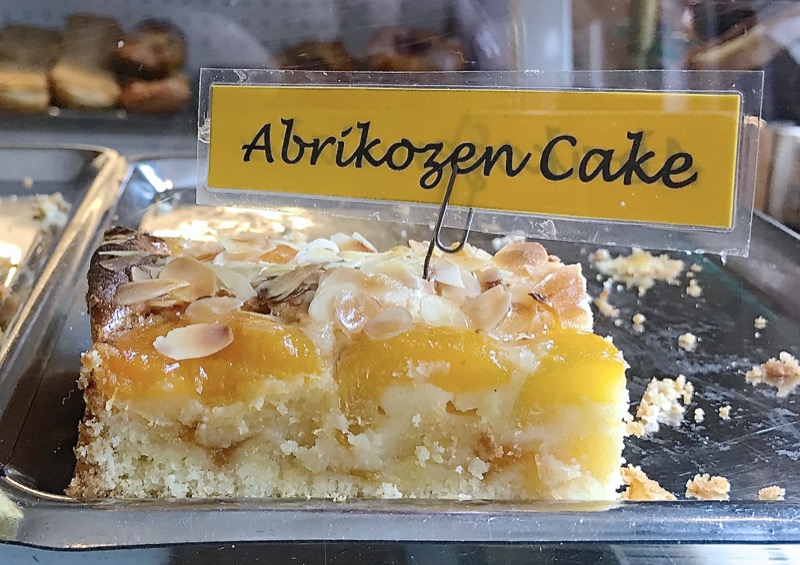
Apricot cake! Mmmmm!
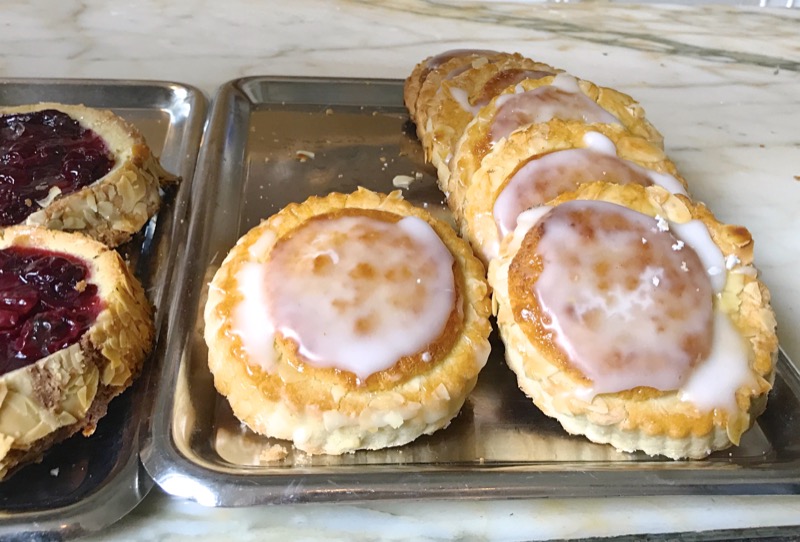
I could not see the thick heart shapped biscuit with the letters on it. It was very crowded, and I was embarrassed to ask with such a line up. I wanted the cherry, but these looked like apricot. “One please.” I pointed, nodded. Nothing else.
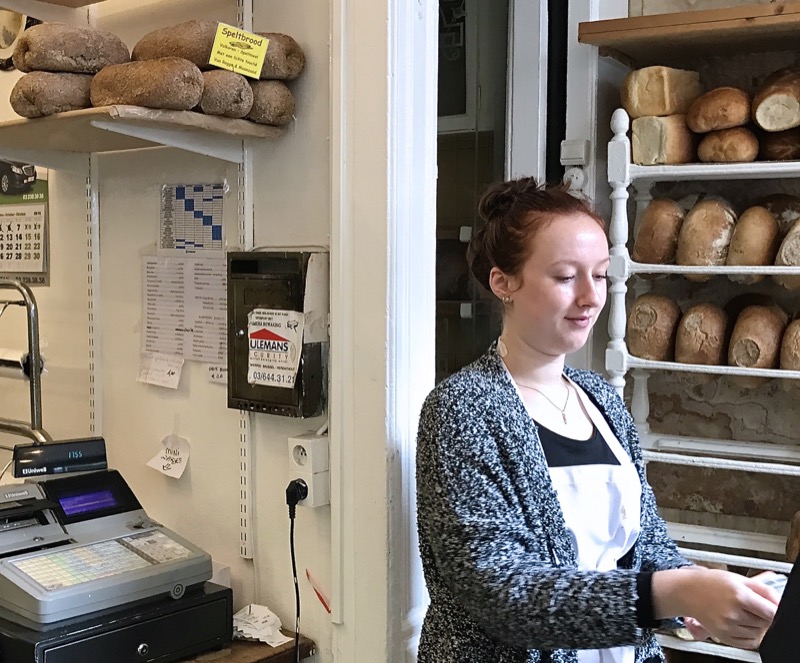
Can she read my thoughts? “Everything! I want everything!”
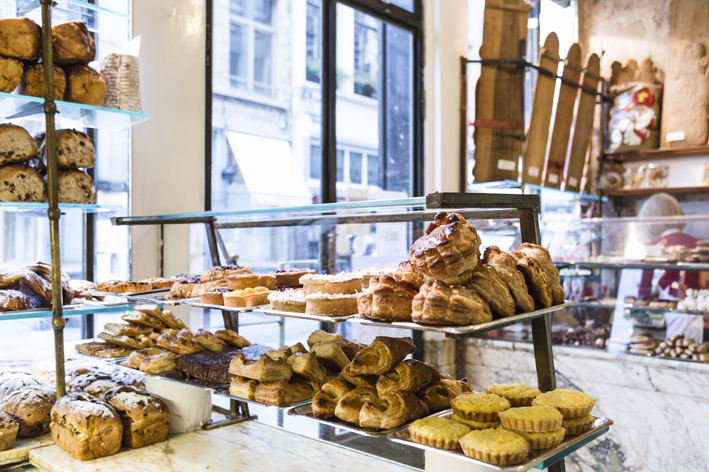
The above photo is from the Yelp site, and was clearly taken from behind the till when the store was closed, but gives a good idea of the size of the interior.
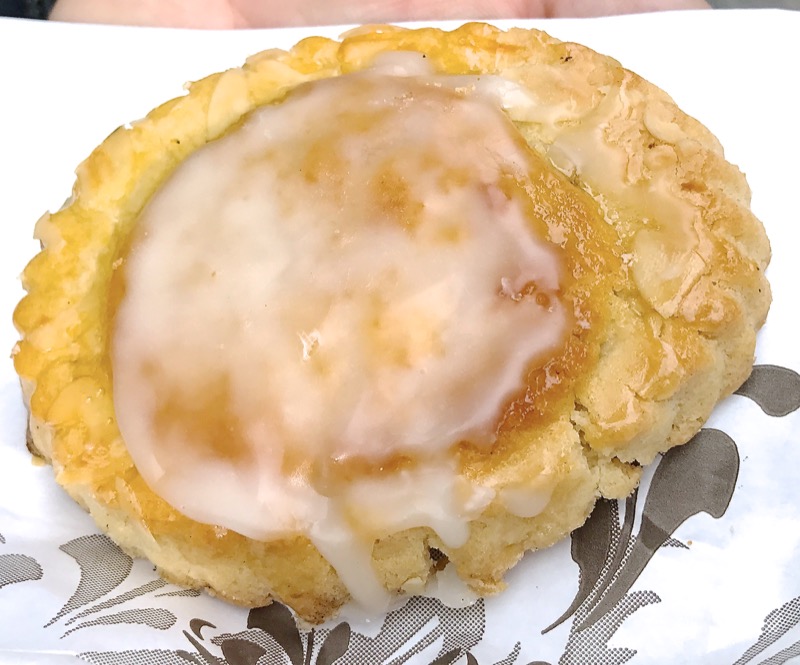
Outside in the light, my dear Vanja waited patiently. Held it, I broke it and tasted it.
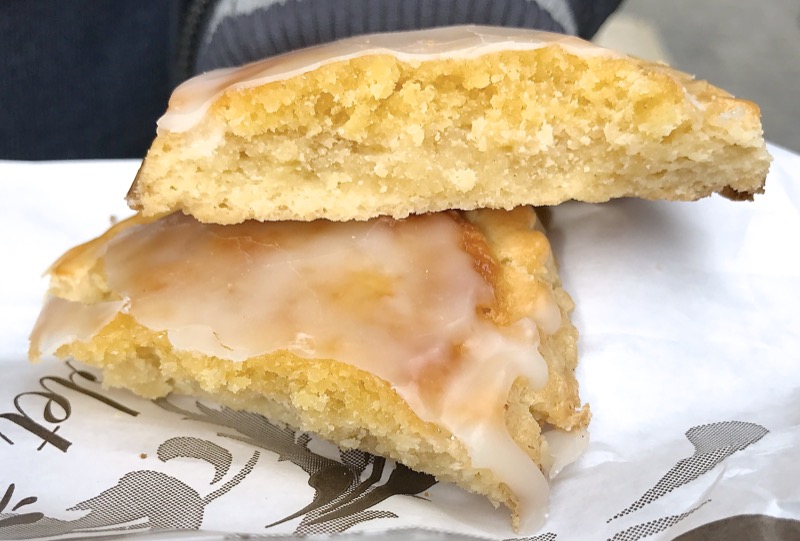
Not at all sweet. Well, a little. Crumbly and dryish. Tasty. Not an apricot. Maybe a dollop of the jam, but not really any discernible apricot flavour. Biscuity. Cookie-like buy more biscuity. Marzipan inside with a subtle almond scent. Very rustic and very satisfying. I had no idea what it was or how I could ever make it. I have seen it called a “theekoekje” or tea biscuit. Is there another name? I really enjoyed it. Am not so smitten that I will go to the ends of the earth to find how to make it or what it is, but would welcome the opportunity to have another. I might like to do a little of that crazy stuff to find a recipe for the Roggeverdommeke! Anyway, we were heading to de Groote Witt Arend for lunch where I tasted the Filet d’Anvers and Vanja had one of the few local specialties, the Stoemp: You can learn more, here, as well.
Flemish Food: Filet d’Anvers
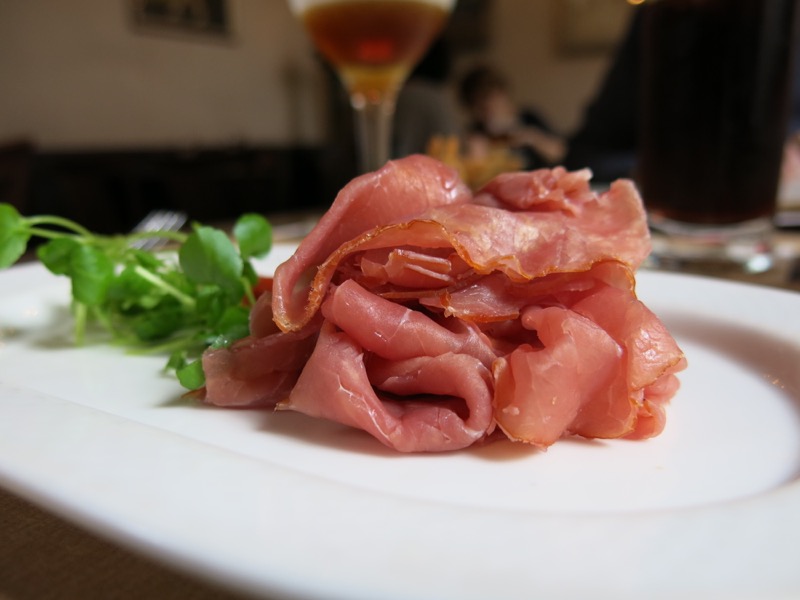
Ariane had told us about the Filet d’Anvers as she was trying to recall the Antwerp culinary icons, and at lunch, I saw it on the menu in another dish, and asked if it would be possible for me to have a taste. They obliged and it is described in the lunch article. Suffice it to say, that this thin, supple smoked beef is famous throughout all of Flanders. The beef is brined, smoked, dried and aged, then sliced ever so thinly. Like all local products, there are many variations. This one was divine.
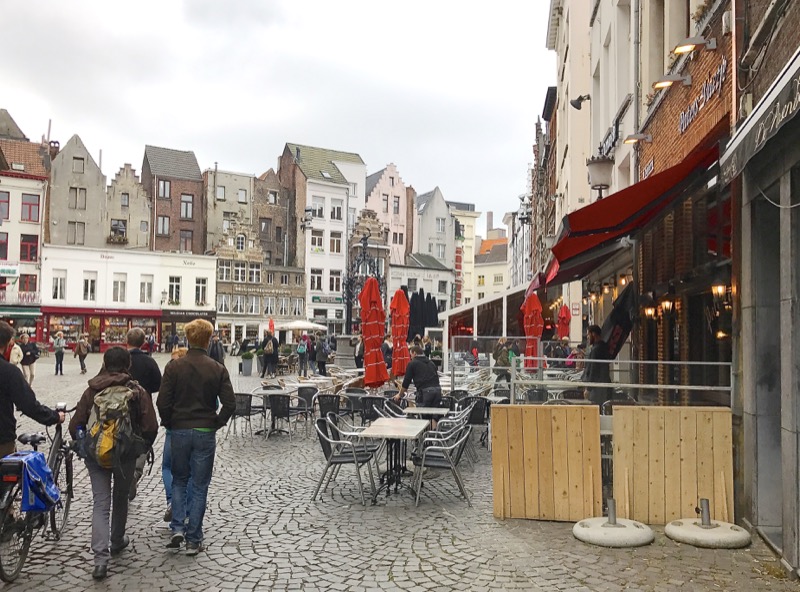
Exhausted at the end of the day, and only 5 pm, but we wanted to just order dinner for taking home; however, the traditional restaurant, Grand Café De Rooden Hoed (The Red Hat), Ariane recommended, below, left: blue awning and red hat over it, doesn’t do take out (though the gal said she would make an exception, bless her), but their kitchen wouldn’t even be open until 6:30. Ah!
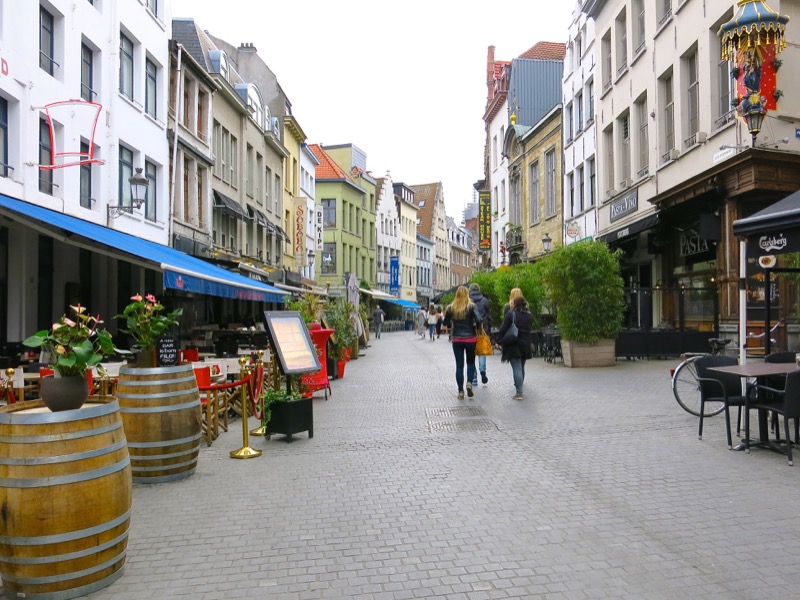
Home we went. Exhausted. I do believe I ate some of Kleinblatt’s bread for dinner. We tried to stop someplace to find food to bring to the hotel, but were too tired to put our heart into it. I am not sure what he ate. We arrived back about 7 pm. Exhausted. Heart and head full of Rubens and our brief, albeit long, day in Antwerp. We missed the Diamond District. Missed the Fashion District. Missed Ladurée enroute to Ruben’s house, but it is French, and had a fabulous tour of so many sights, found these little Flemish food places, and were ready for a good rest to take on Ghent, and the Mystic Lamb, the following day.
Rubens House
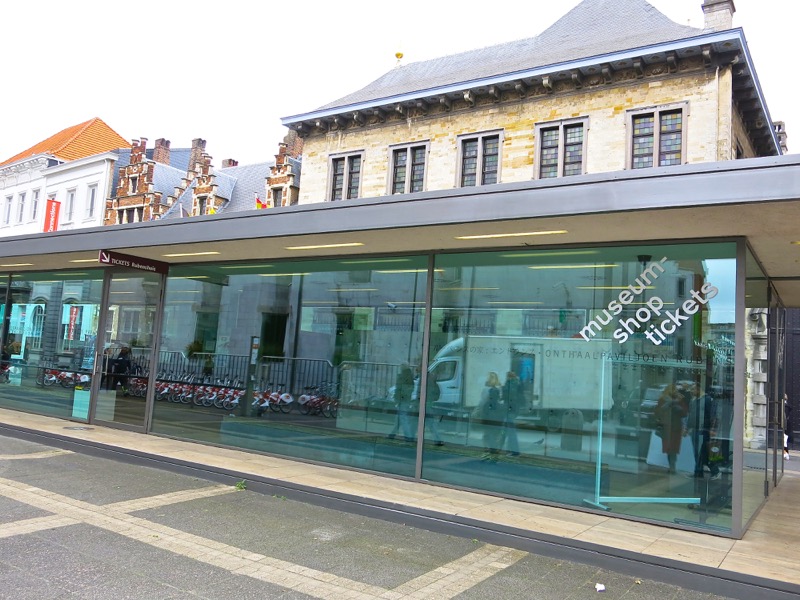
 I had to sneak a short version of our tour through Rubenshuis in here. Ticket office is above, in the middle of the street in front of his “house”. “He was capable of everything and knew everything. He was a brilliant and versatile artist, run a large studio, spoke several languages, collected art, designed his own home, traveled around Europe as a diplomat, [was knighted,] and was interested in science. Rubens was well-versed in almost everything.” (from his website) There is a list with the images of his top 10 masterpieces here, though he has created well over 1000 works in his lifetime that are all considered masterpieces. The London National Gallery writes: “He was … described as having ‘a tall stature, a stately bearing, with a regularly shaped face, rosy cheeks, chestnut brown hair, sparkling eyes but with passion restrained, a laughing air, gentle and courteous’.”
I had to sneak a short version of our tour through Rubenshuis in here. Ticket office is above, in the middle of the street in front of his “house”. “He was capable of everything and knew everything. He was a brilliant and versatile artist, run a large studio, spoke several languages, collected art, designed his own home, traveled around Europe as a diplomat, [was knighted,] and was interested in science. Rubens was well-versed in almost everything.” (from his website) There is a list with the images of his top 10 masterpieces here, though he has created well over 1000 works in his lifetime that are all considered masterpieces. The London National Gallery writes: “He was … described as having ‘a tall stature, a stately bearing, with a regularly shaped face, rosy cheeks, chestnut brown hair, sparkling eyes but with passion restrained, a laughing air, gentle and courteous’.”
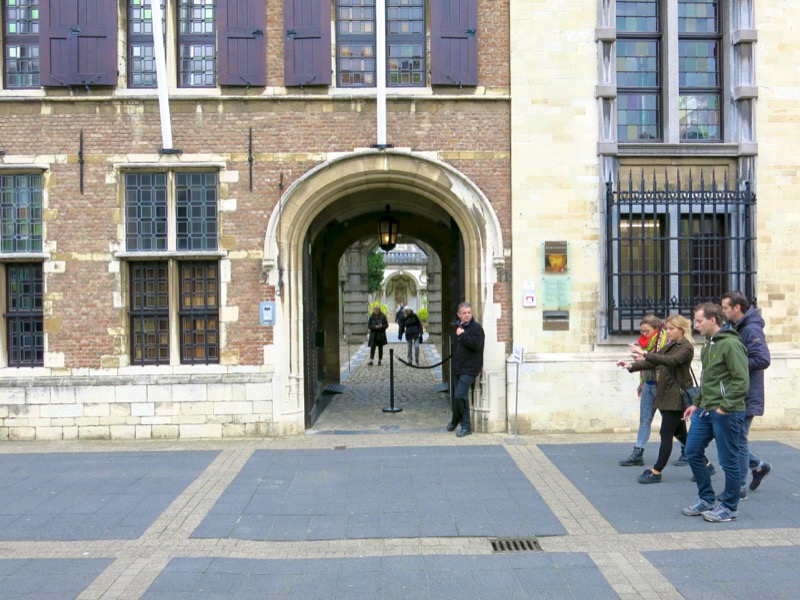
Entry to the “house” Peter Paul Rubens designed with a studio that he moved into in 1610.
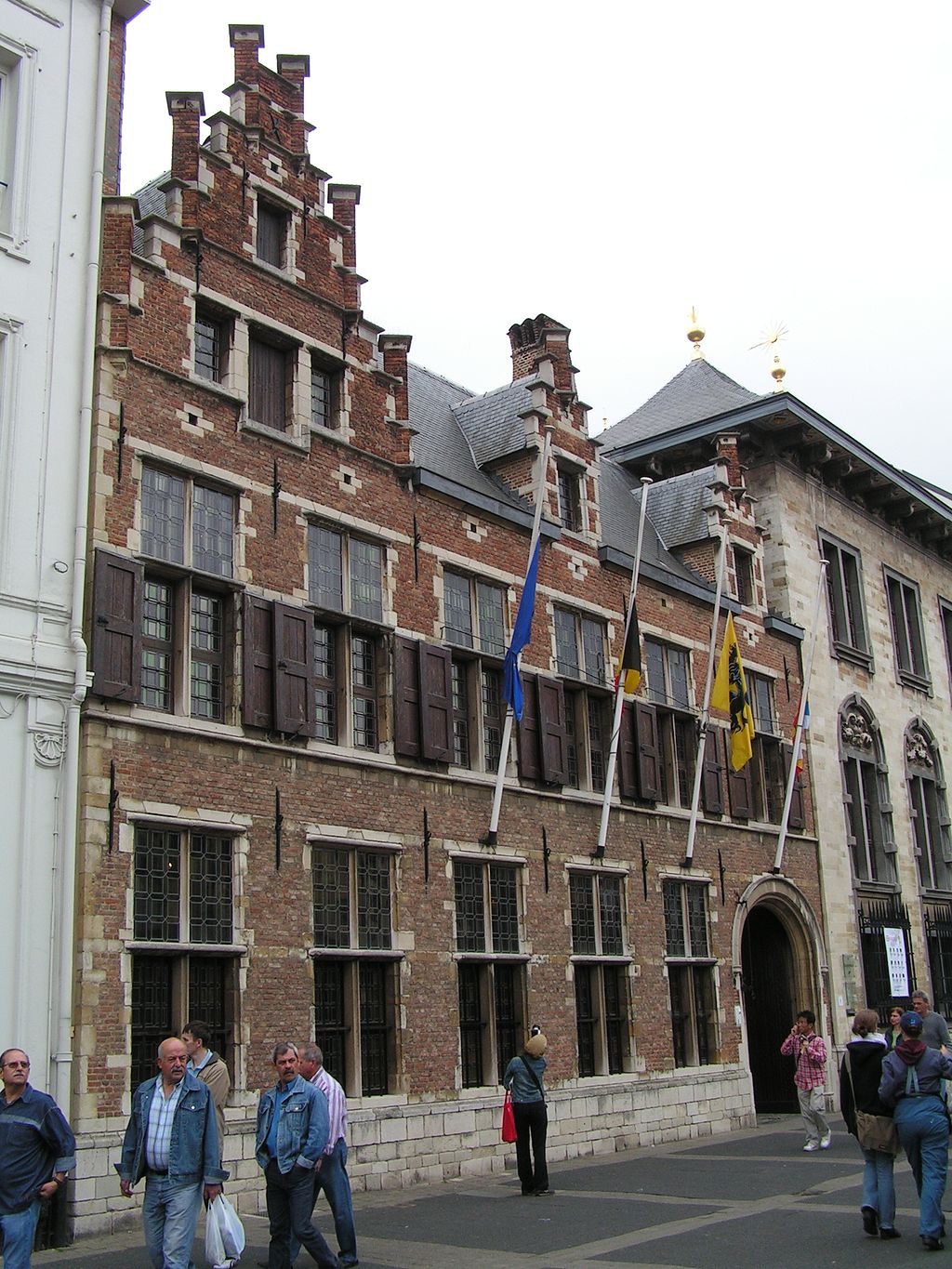
Above photo is from Wikipedia of the street view of his house from the opposite direction without the Ticket office and shop obscuring its view. His most famous pupil in this workshop during this phase o his life was Anthony van Dyck who became a famous portraitist and frequent collaborator of Rubens.
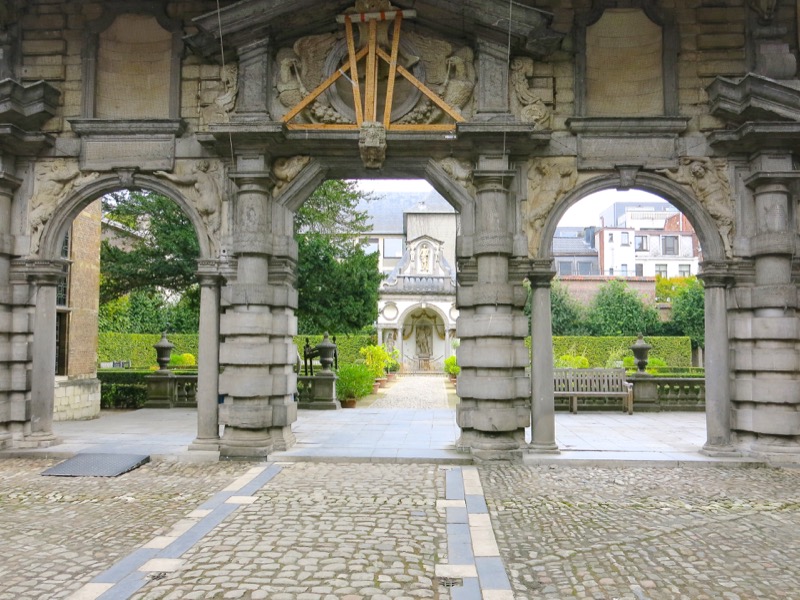
Like so many “house” entries, you enter into his garden… but it is exceptionally grand.
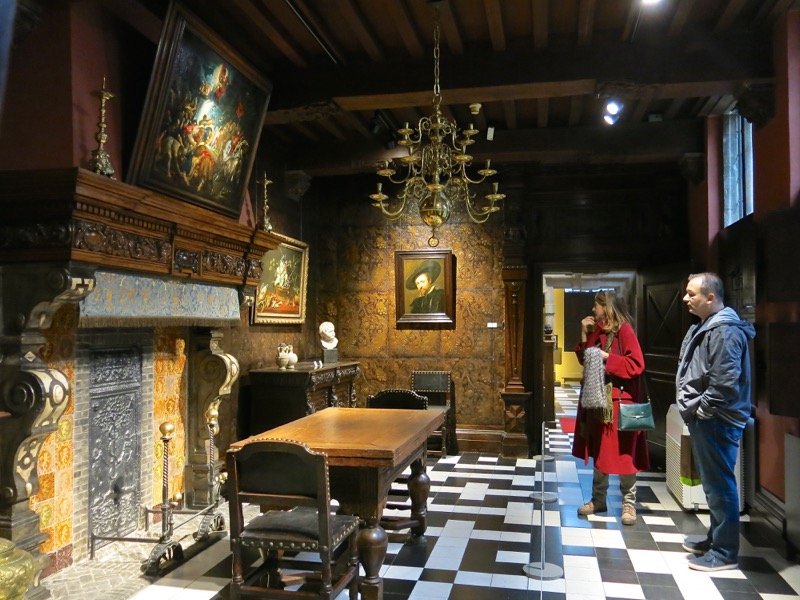
Many of the paintings throughout are gifts to him, and not his own art work. All of the furniture is “of that time” but may not have been his own.
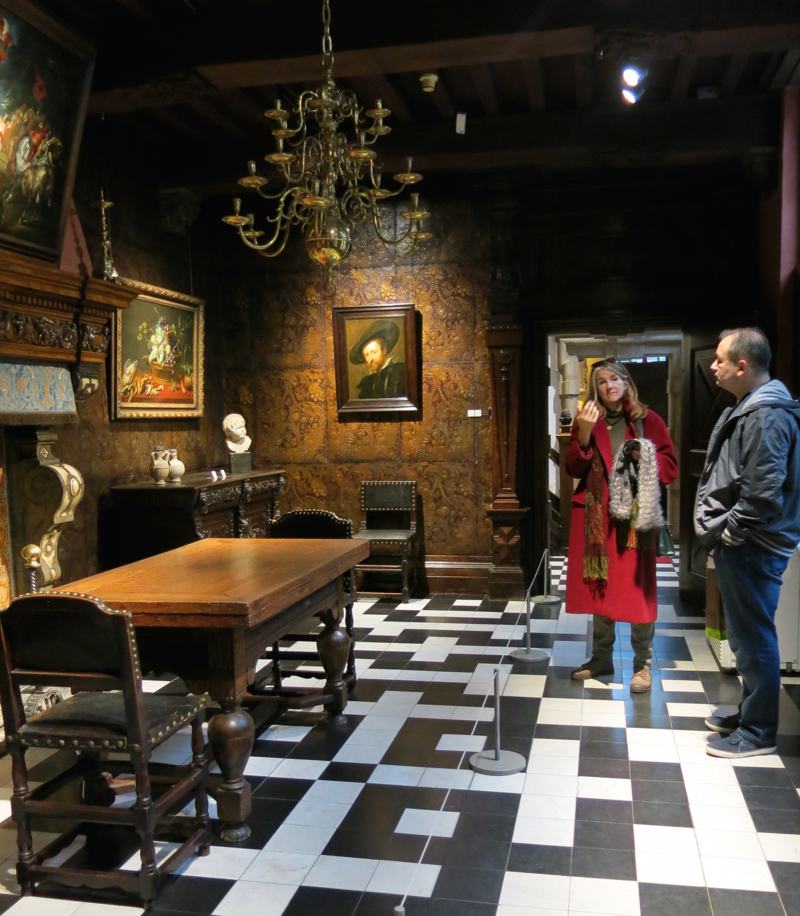
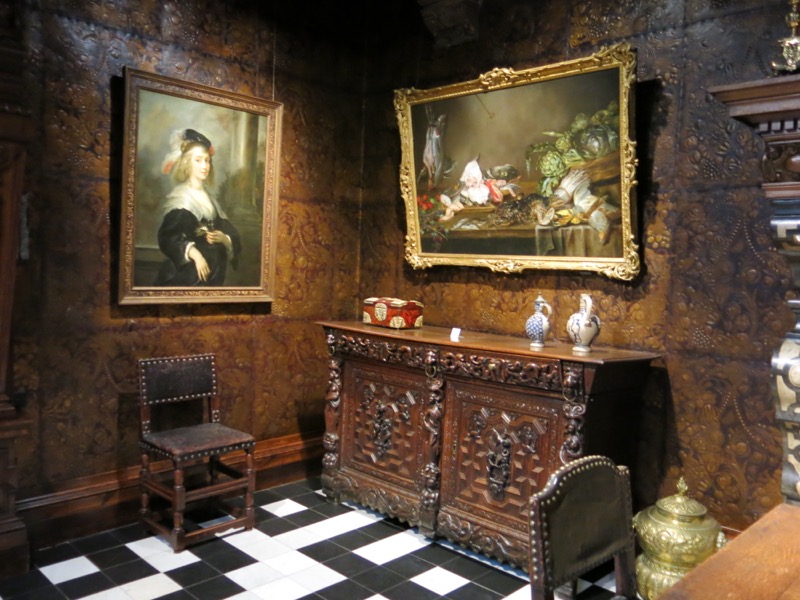
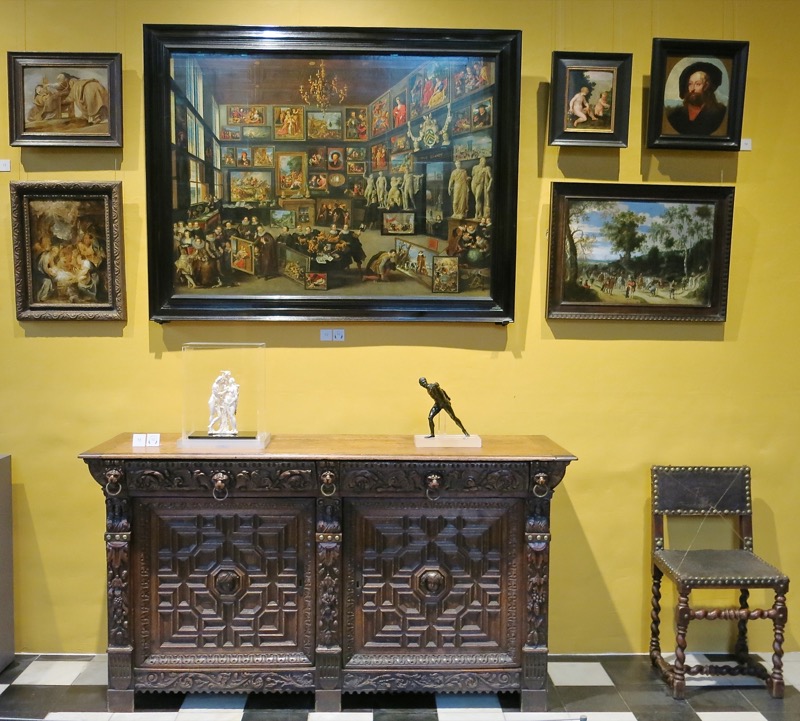
These pieces were gifts to him.
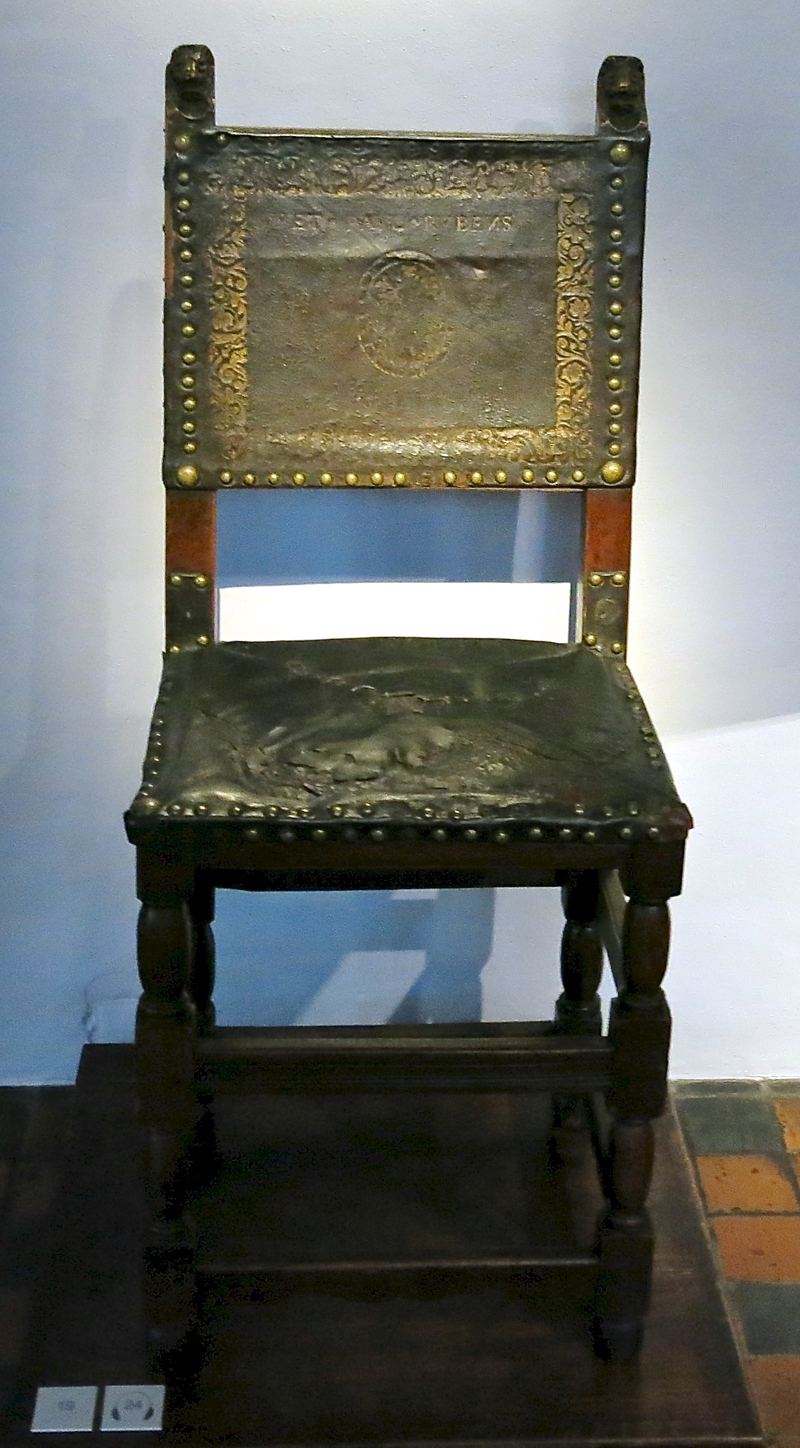
This is his actual chair with his name on it. Look to the image above to reference the size. It is very similar in size, and to the left of the cabinet, below.
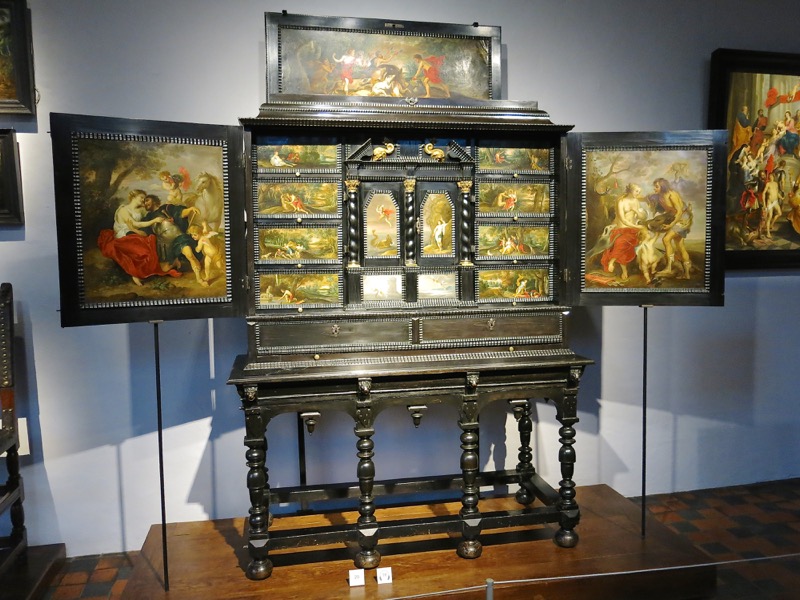

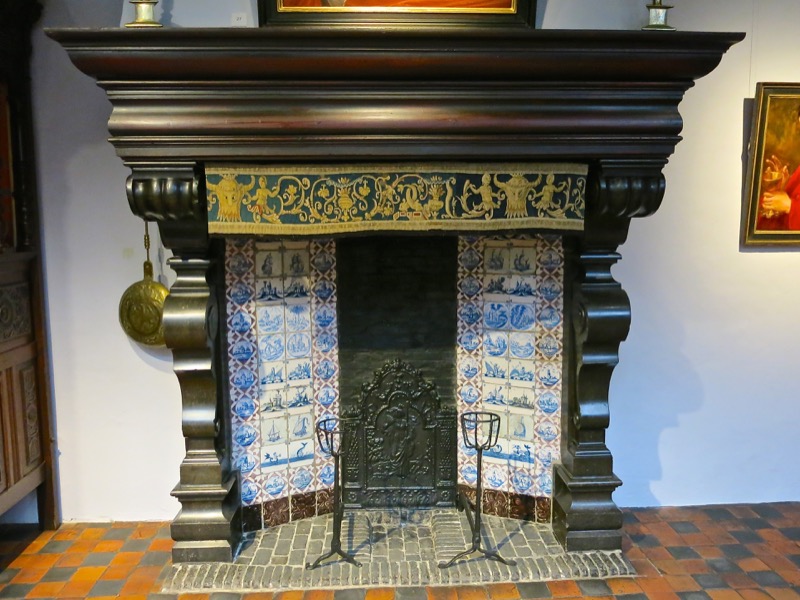
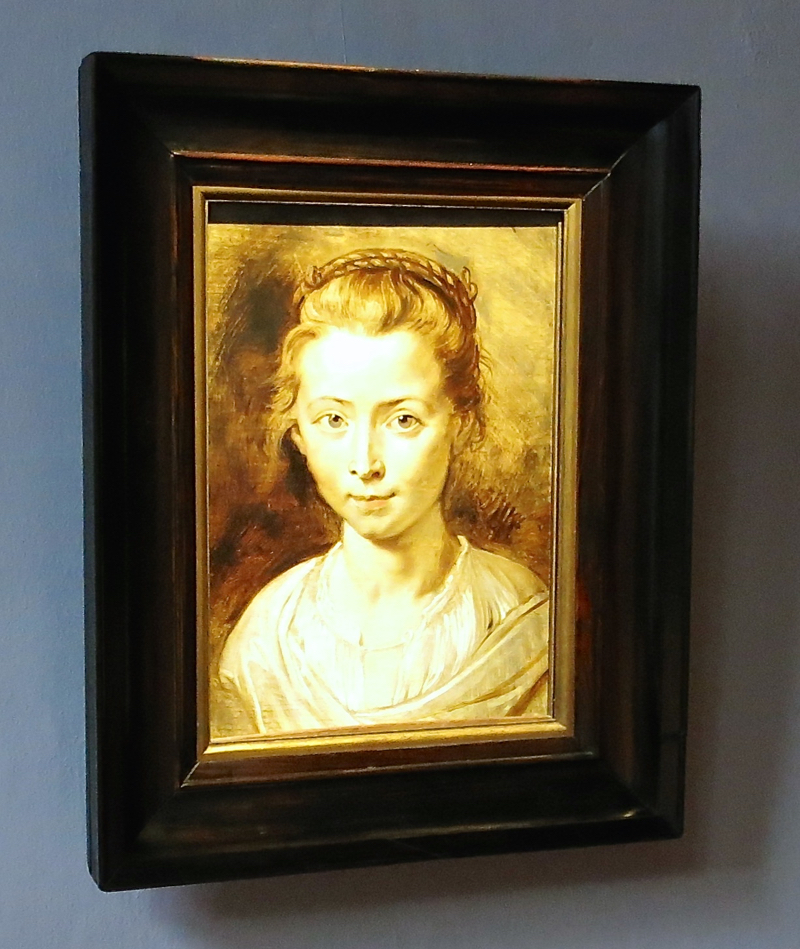
Apparently a “sketch”, not a finished work of art, by Rubens, to remember the image of a daughter that died.
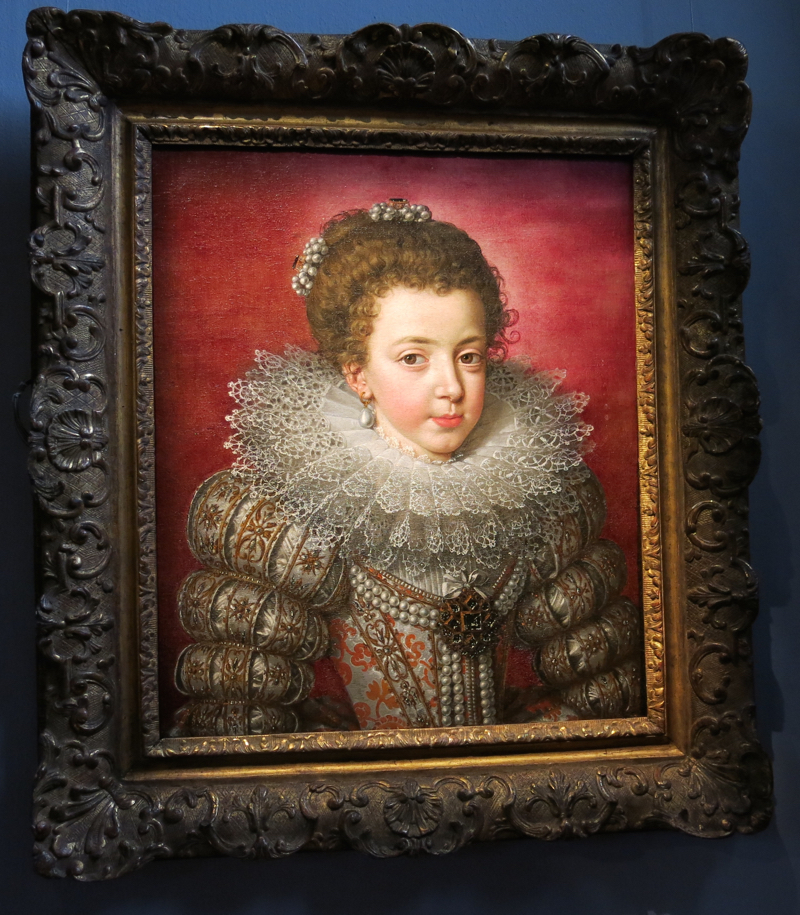
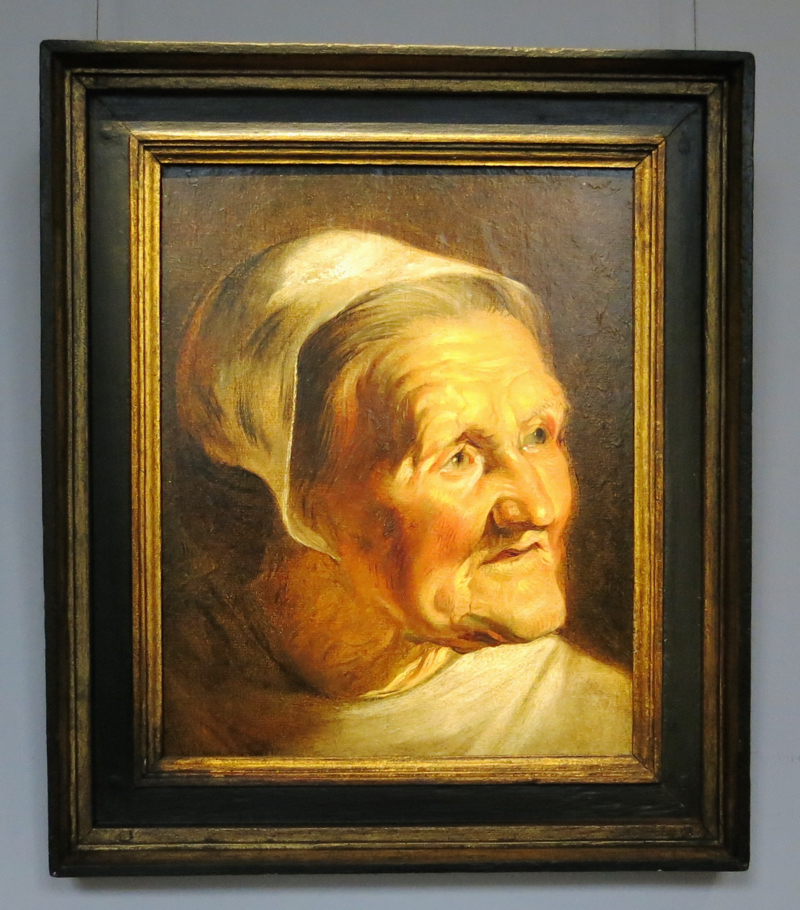
Believed to be his mother.
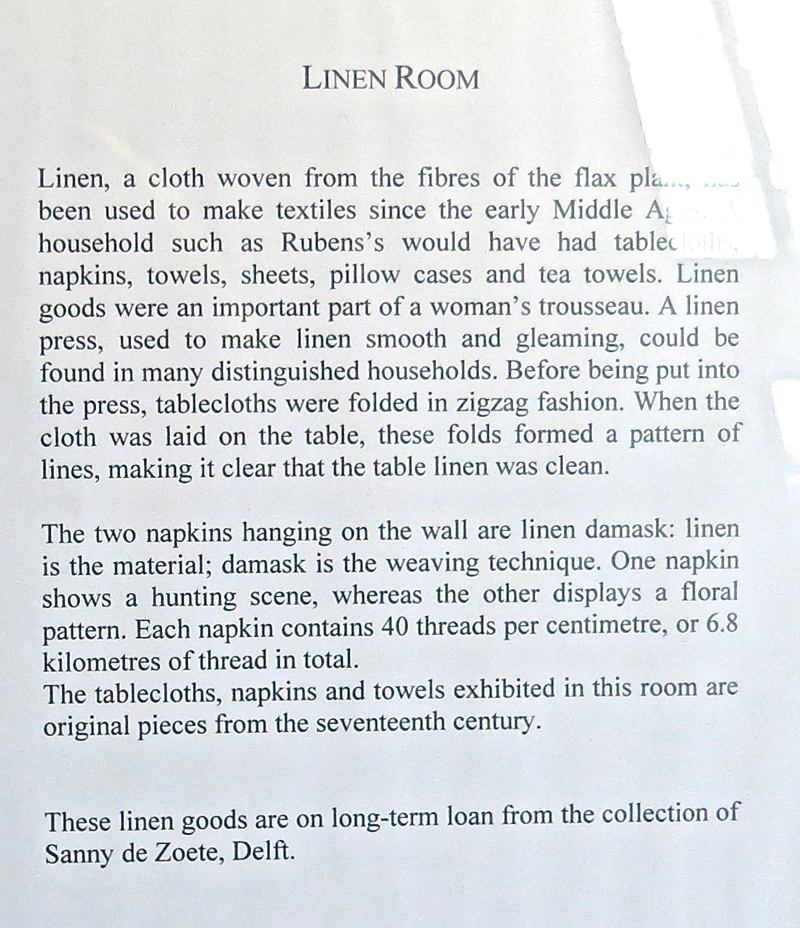
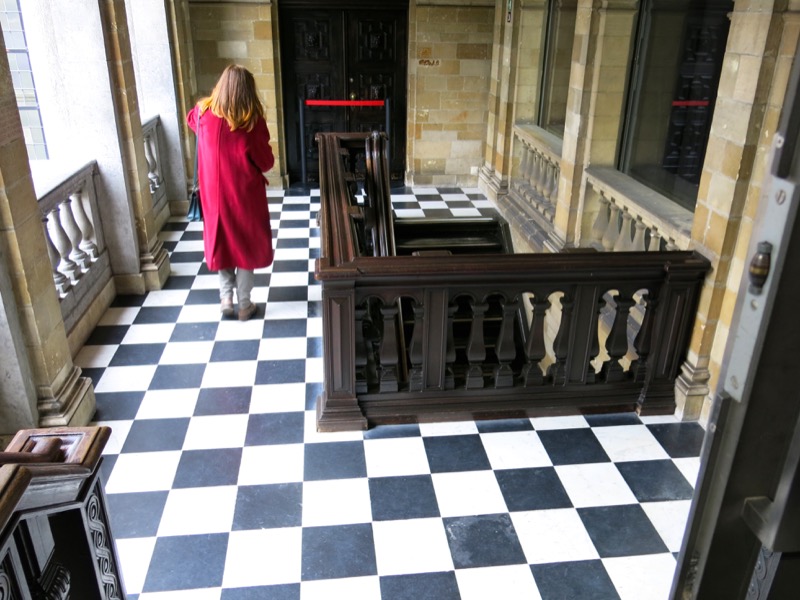
Used to be completely closed in when Rubens lived here, but is now open to the garden, below.
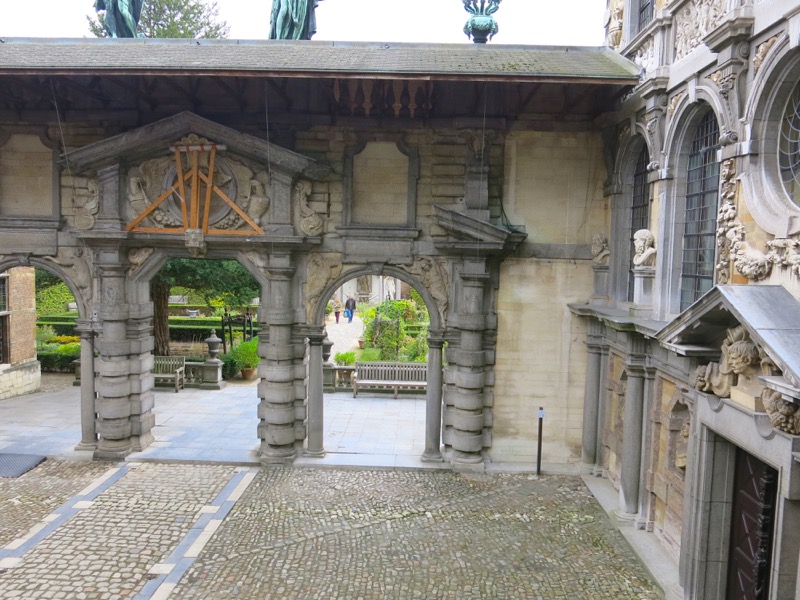
Looking down to the same place we entered, from above.
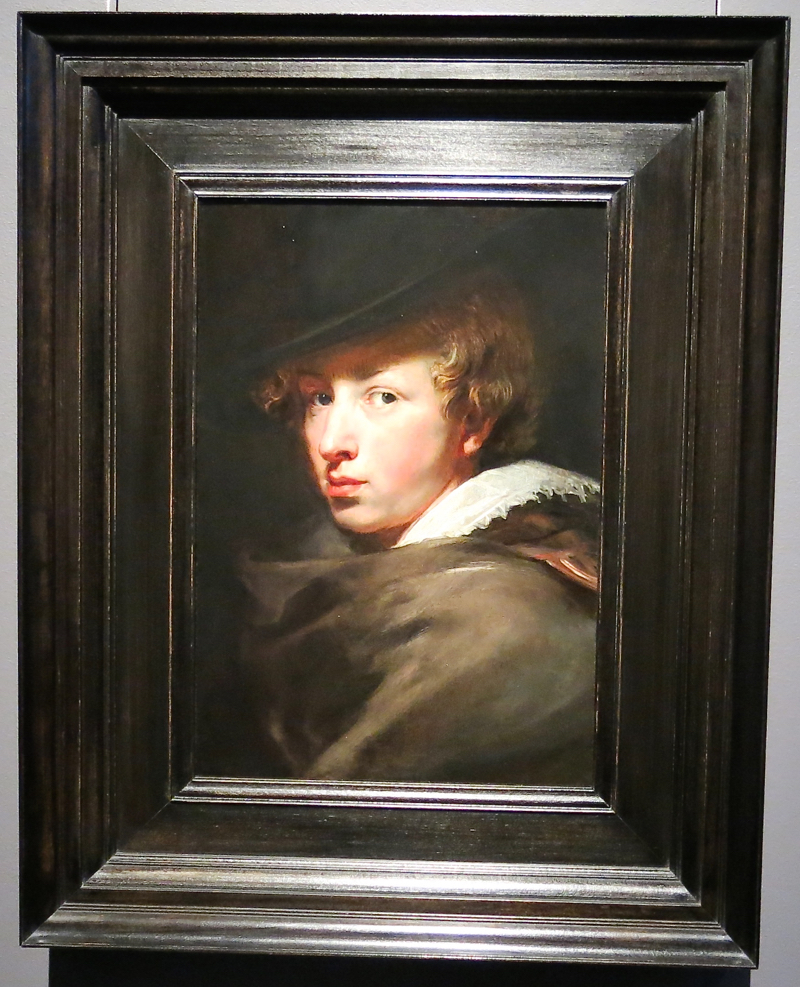
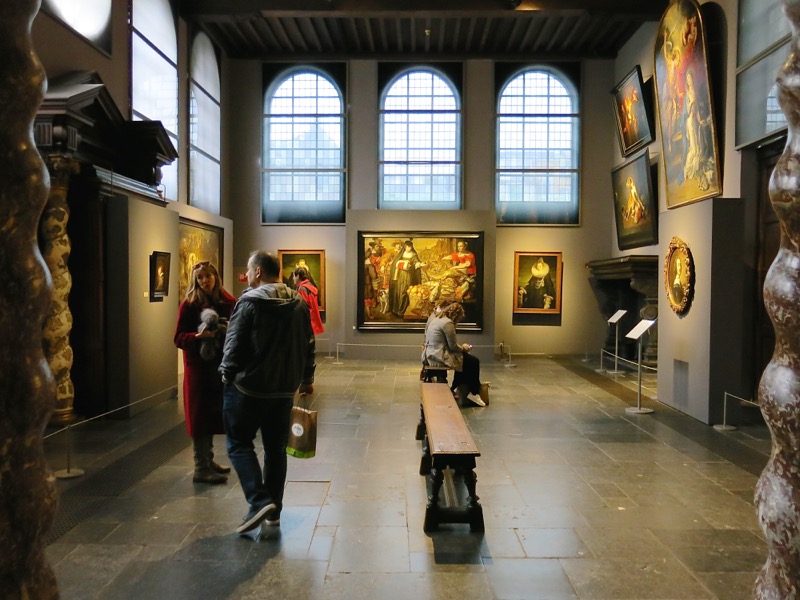
In the lower area, in his workshop where he would have employed his group of painters.
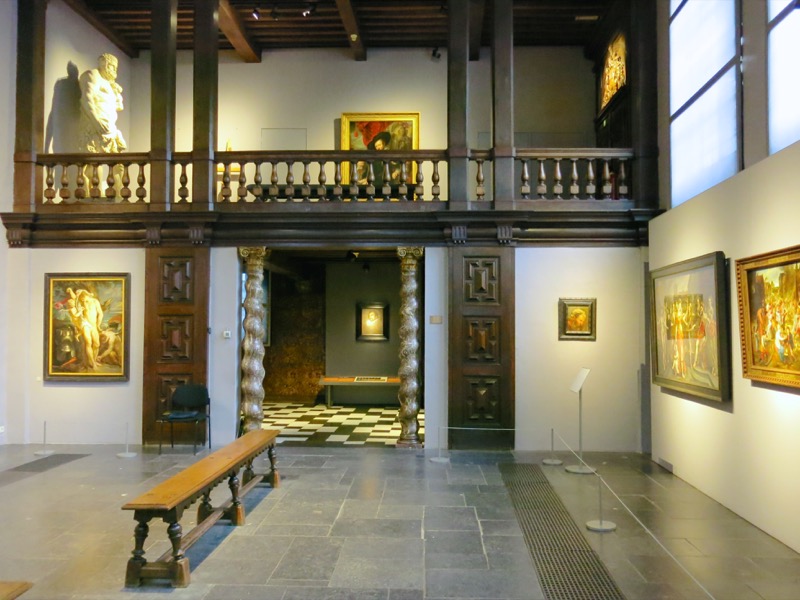
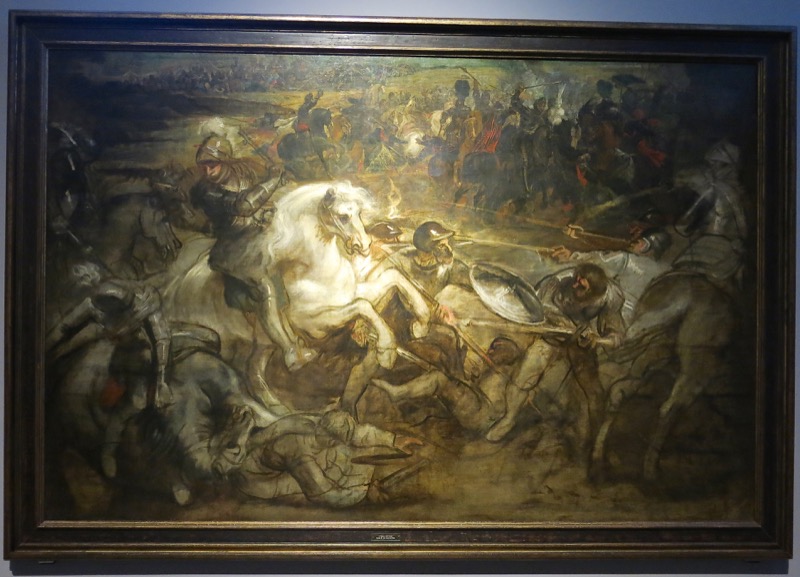
Above is a work still in progress. He would have sketched out the work. Different artists from his group would complete different parts of each painting, dependent upon personal expertise, then he would finish it, or closely oversee the finish of each painting.
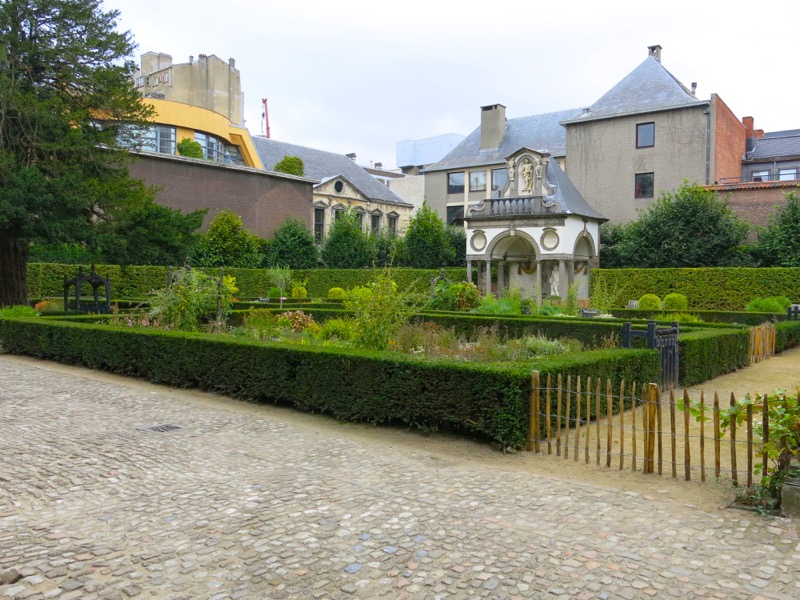
His outer garden.
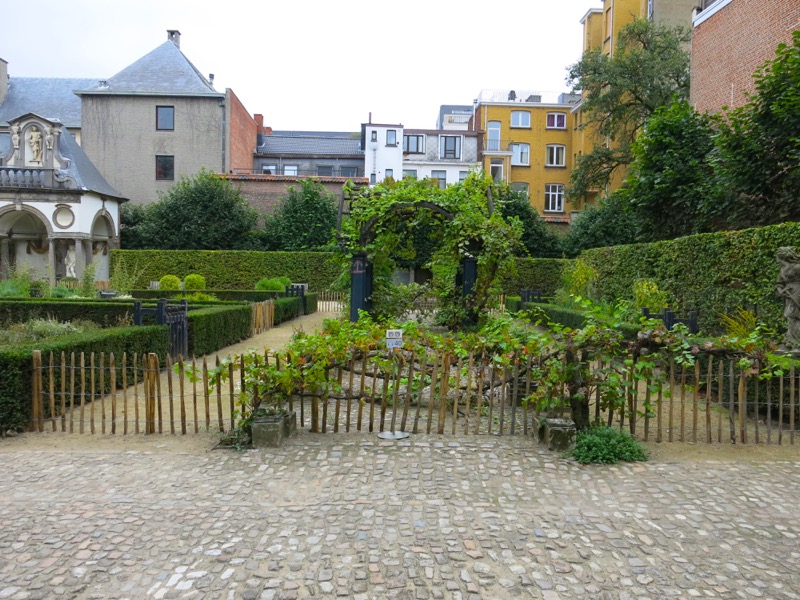
Can you imagine the parties? Apparently, he was friends with the Medici and Habsburg families, as well as the royalty of France and Spain, all of whom would attend his parties, and he, theirs. I would have paid a pretty penny for a Flemish Food cookbook of Rubens favourite recipes! He led an exciting, very full, active and meaningful life and left a legacy of some of the most provocative and emotionally moving art of all time.
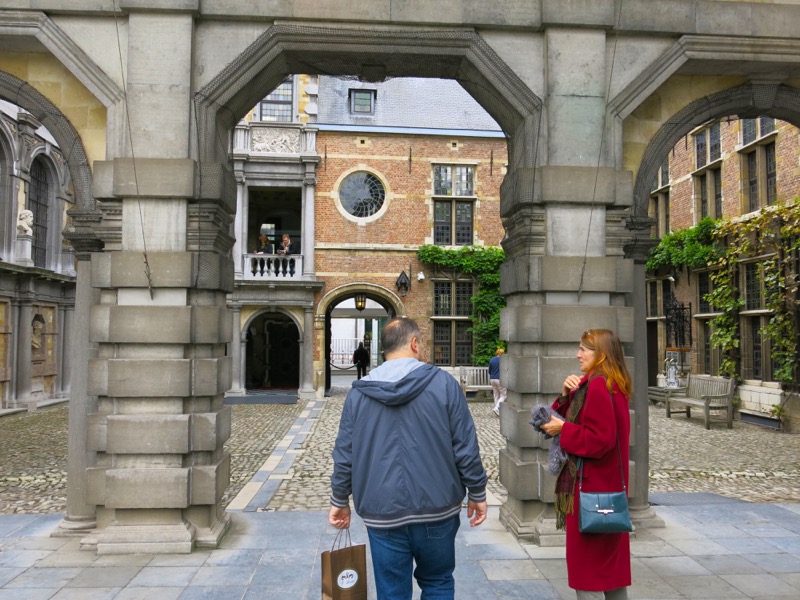
I could go on. (And have!) Suffice it to say, we have seen many of his pieces in our travels, and though dramatically different than Vermeer’s work, which I find completely irresistible, or Rembrant’s work which is intricate, so intimate, authentic, honest and sincere, I view the opulent voluptuous sensuality in Ruben’s paintings as a reflection of his own life.
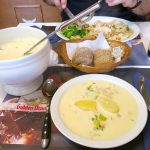
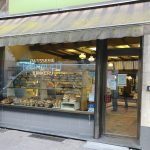
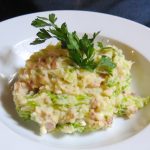
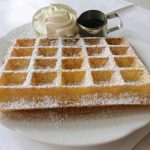
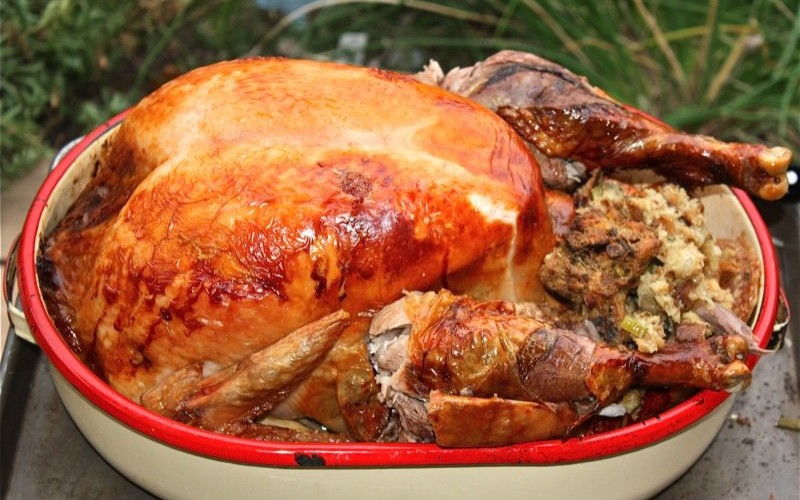



Leave a Reply